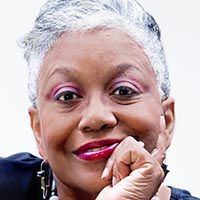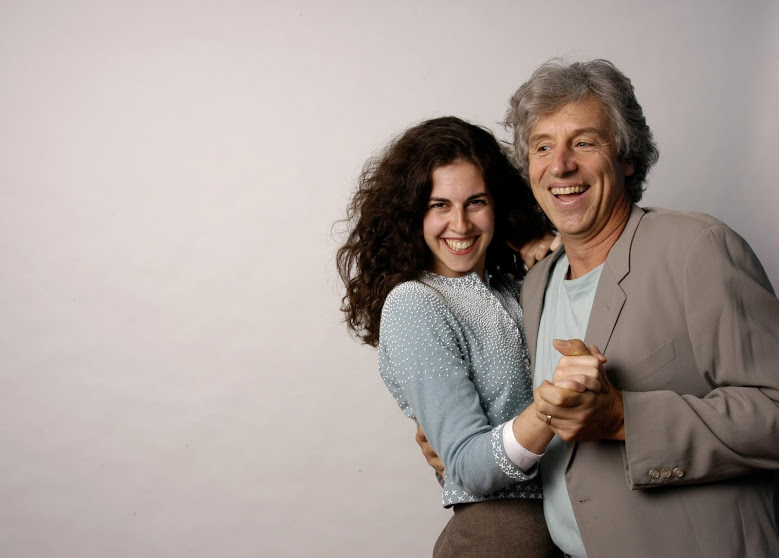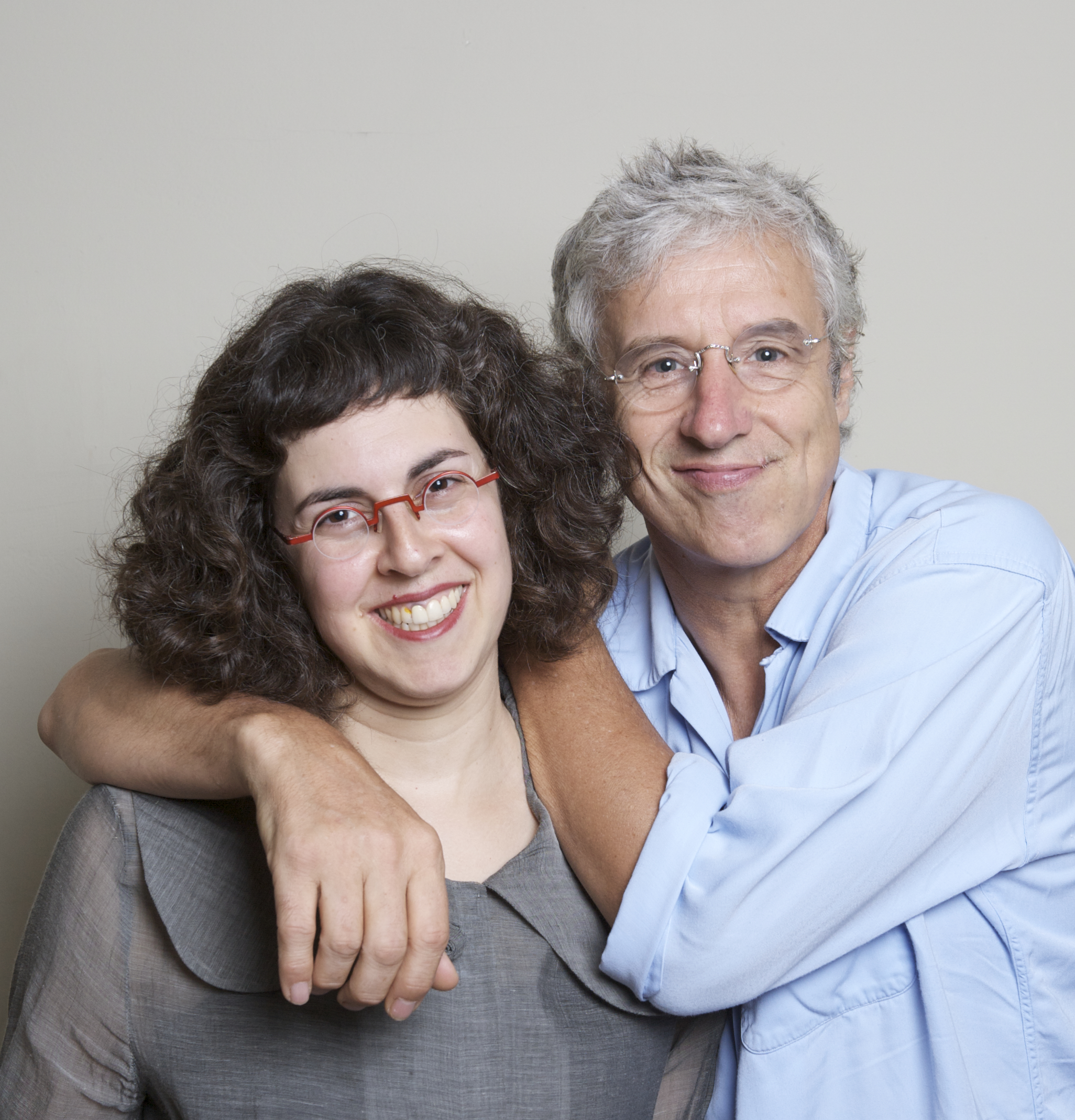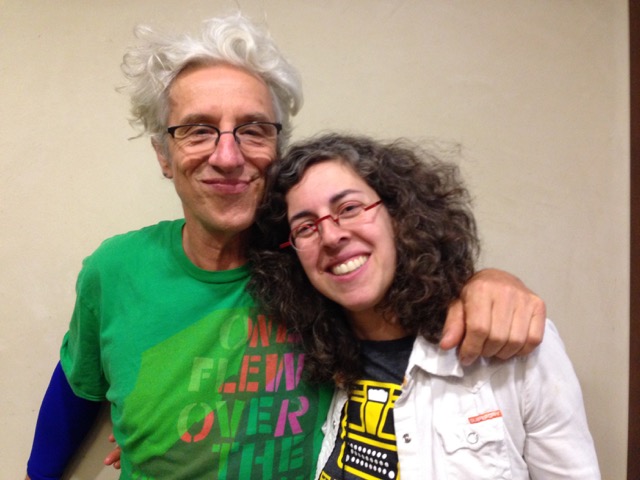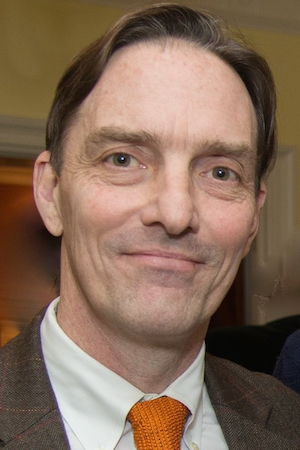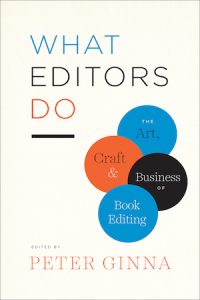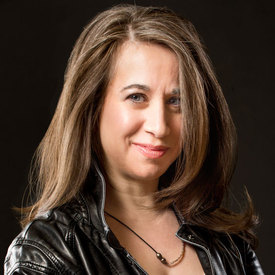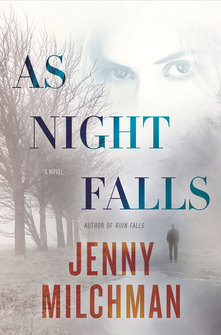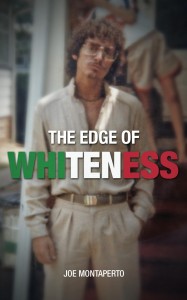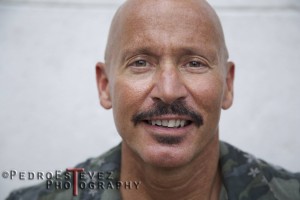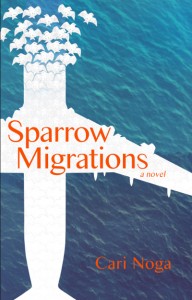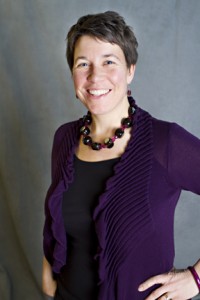The Book Doctors talk about diversity in books, & get tips on how to get successfully published at Book Con from New Jersey‘s own Cheryl Willis Hudson editorial director of Just Us Books, an independent publisher of black-interest books for children and young adults.
Tag: editing
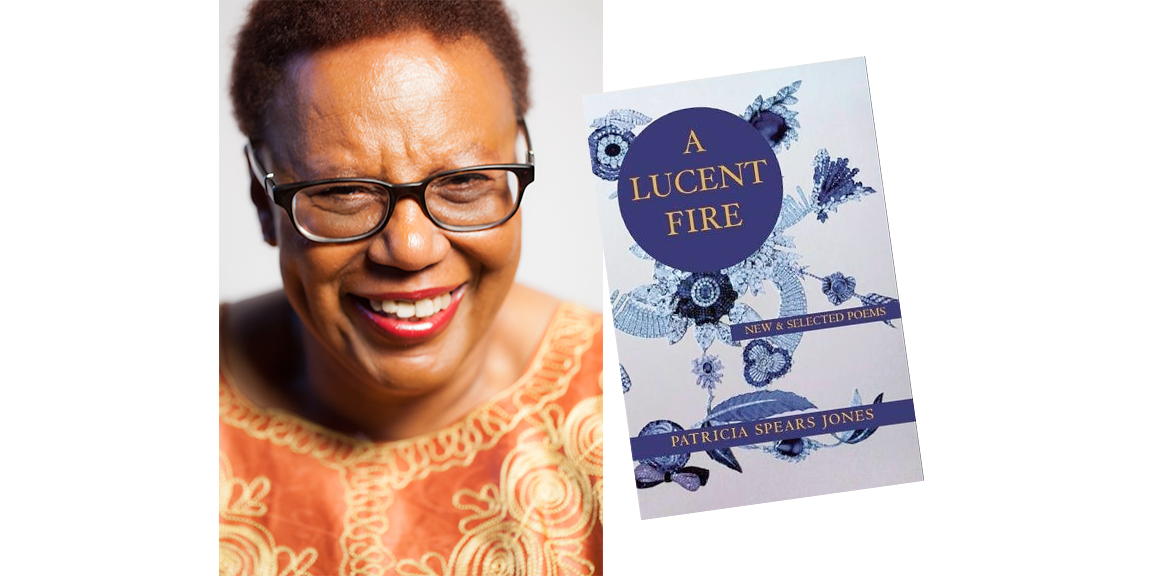
The incredible poet Patricia Spears, Jones talks about being a poet, writing poetry, being a publisher, finding your community of writers, getting your poetry out into the world, and building your career as a poet

Grant Faulkner, Dir. of National Novel Writing Month, or NaNoWriMo for short, talks to The Doctors about overcoming discouragement from others, crashing your own gate, writing a terrible first draft, editing it so it gets better and better, and becoming part of a community of writers who support and nourish each other.

Great interview with Wayétu Moore, writer extraordinaire, about books, writers and publishing with the Book Doctors
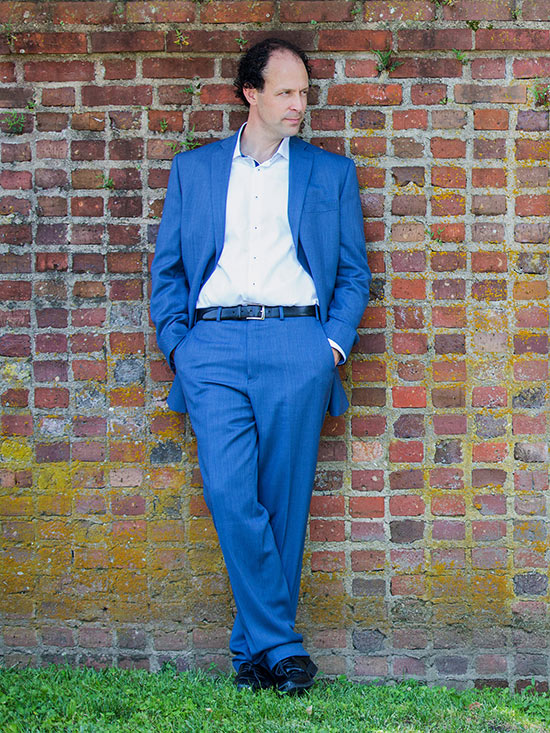
The Book Doctors interview amazing author Brad Parks. He has so many useful & fascinating things to say about how to become successfully published writer.
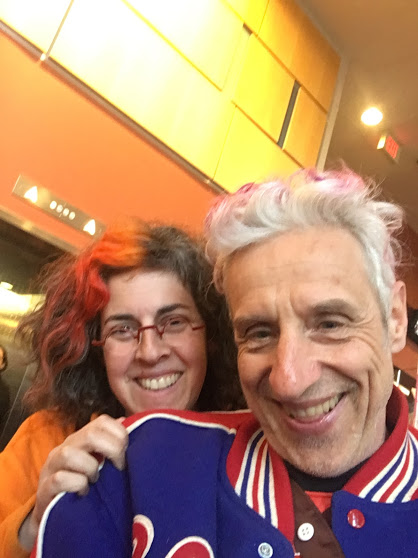
The query gets you past the gatekeepers watchdogs. Or it doesn’t. Find out how top take your best shot.
The Book Doctors break down exactly what you and make an awesome query letter, and how to customize your query for submission purposes only
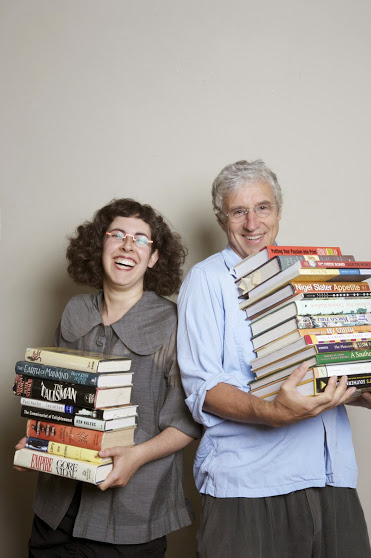
If you plan to query agents, pitch editors, or self publish, get your writing into the world before you have a book because it proves there’s an audience interested in your subject. Where to start? We’ll tell you how to pitch big publications and niche. Here’s what we cover:
- Publications that will build your platform
- Examples of bylines that landed book deals
- How to pitch publications and follow up
- Self-destructive impulses to avoid
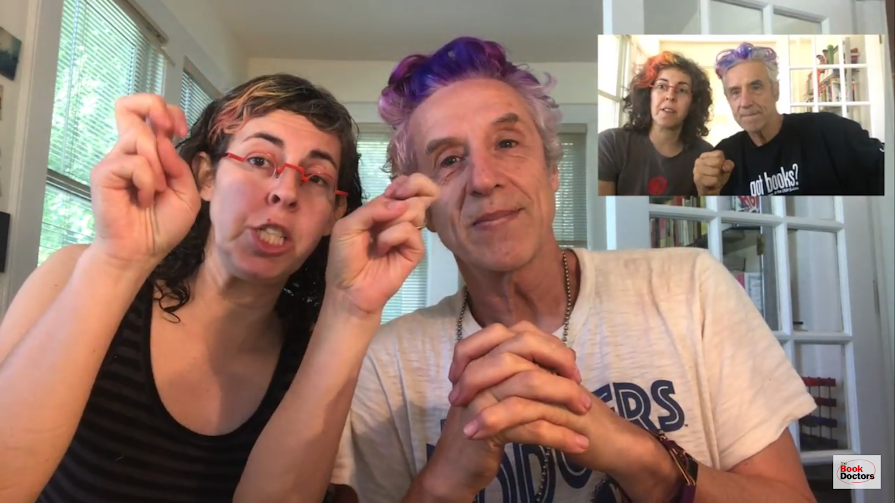
Disreputable author service companies often masquerade as legitimate publishers. Here’s how to publish a book without getting scammed. Ask us questions in the comments.
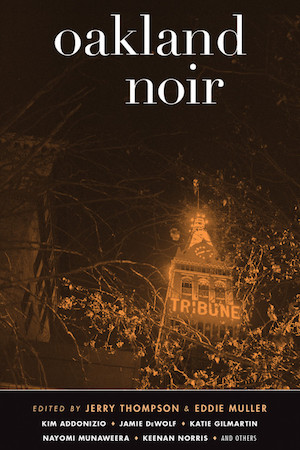
If you live in the Bay Area, which we did for many years, and you have a penchant for the dark side that draws you toward the underbelly of noir, you know Eddie Muller. He’s a legend. Let’s face it, you don’t get to be the Czar of Noir for nothing. So when we found out he was editing the new Oakland Noir, part of the great noir series by Akashic, we jumped at the chance to pick his dark brain about Oaktown, writing and the book business.
Read this interview on the HuffPost.
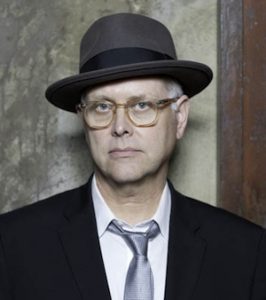
Eddie Muller
The Book Doctors: What are your earliest memories of being interested in noir? What were some of your favorite noirish books when you were going up, and why?
Eddie Muller: I’m of an earlier generation, pre-VCR. I was first drawn to noir by movies I’d see on Dialing for Dollars, weekdays afternoons when I’d cut school. Stuff like Thieves’ Highway and Cry of the City and The Big Heat. I started combing TV Guide to find movies with “Big,” “City,” “Street” and “Night” in the title. There’s a title: Big City Streets at Night. I’d watch that. The look of the films and the attitudes of the characters resonated with me. I was at the epicenter of the hippie movement in San Francisco, but I was intrigued by this earlier generation’s style and attitude.
In high school I started reading Raymond Chandler and Dashiell Hammett, and the die was cast. In that way, I’m like virtually every other crime fiction writer. It’s amazing the influence those guys had, especially Chandler. His prose was intoxicating. Reading Hammett’s short stories made you want to be a detective. Reading Chandler made you want to be a writer. After that, you just start devouring everything. At a certain point I began distinguishing between mystery writers and crime writers. And I became less interested in the detective whodunnits and more fascinated by the noir stuff: Patricia Highsmith, Jim Thompson, David Goodis, Charles Willeford. Their books don’t resolve neatly. Things aren’t going to end well.
TBD: What are you currently reading?
EM: I’m looking forward to a couple of days off so I can read Paul Auster’s latest, 4321. I’ve seen some discouraging reviews, but I read everything of this. He’s my favorite living author. I enjoy how his mind works and I like how he translates it to the page.
TBD: What are some of your favorite noir classics, and again, why?
EM: Derek Raymond’s Factory series books are pretty great, especially I Was Dora Suarez. He really turned detective stories into noir literature. Forgive me for touting the obvious touchstones: Hammett’s big three: Red Harvest, The Maltese Falcon, and The Glass Key. Chandler’s The Long Goodbye. Here’s the thing about crime fiction: you end up loving a writer’s body of work more than a single book. I like reading David Goodis, but I can’t say I like Cassidy’s Girl more than Nightfall. Same with Jim Thompson. Charles Willeford, The Burnt Orange Heresy. I like Highsmith’s Ripley novels. I like Highsmith in general. She still doesn’t get her due because, obviously, she was a woman writing in what’s perceived as a man’s genre. I had that bias once, as a younger and stupider man. Then I wised up. More guys should wise up.

Akashic
TBD: Having been published in San Francisco Noir, part of the Akashic series, I’m a big fan of these books. How did you become involved with Oakland Noir?
EM: Well, we were both in that San Francisco noir collection! I was sort of wondering when Johnny Temple, Akashic’s publisher, would get around to Oakland. I mean, seriously, how can you have Duluth Noir before Oakland Noir? As it turns out, Jerry Thompson, who’s a writer and bookseller in Oakland, had pitched Johnny on an Oakland Noir collection but hadn’t gotten a green light. Then Jerry approached me about co-editing the anthology—and I guess because Johnny and I had some history we got the go-ahead.
TBD: What was it like editing all these amazing writers?
EM: It was great! Jerry and I shared a vision of what we wanted the book to be—an accurate demographic reflection of the city. Meaning we wanted an appropriate gender/racial/ethnic mix to the stories. Which can be tricky. You want good well-conceived, well-written stories, not just stories featuring a black or Asian or Hispanic character. Let’s be honest: it’s a crap shoot. Jerry did the hard work of selecting most of the contributors, because he knew the literary landscape of Oakland; I pulled in a couple of my buddies, Kim Addonizio and Joe Loya. We had a vision of how the book should play out, but you can’t tell writers what to write. In the end, I was happy with the result. The reviewer for Publishers Weekly complained that some stories weren’t really noir, but the Kirkus reviewer understood completely: our mission was to reveal the city beneath the mainstream perceptions, to use genre fiction show sides of Oakland not usually seen.
TBD: What do you think separates great noir from everyday pulpy potboilers?
EM: Empathy. Great noir writing makes you feel and contemplate lives gone off the rails. That’s not entertaining for a lot of people, but to me it’s one of the purposes of art.
TBD: What exactly is a noircheologist? (Spell check really hated that word!)
EM: I dig through the past to rescue and revive this stuff. That’s the mission of the Film Noir Foundation, which I founded in 2006. We rescue and restore films, specifically noir, that have slipped through the cracks and disappeared. There are a lot of savvy small publishers who are noircheologists on the literary side, but I’m the guy when it comes to film. We recently resurrected a terrific 1956 noir film from Argentina, Los tallos amargos (The Bitter Stems), and preserved a sensational picture from 1952 called El vampiro negro; it’s an Argentine reworking of Fritz Lang’s M. I’m on a crusade now to show that film noir was not specifically an American thing.
TBD: You have one of the coolest nicknames around: “The Czar of Noir.” How did that come about? And how can I get a nickname that cool?
EM: A woman named Laura Sheppard, event coordinator at the Mechanic’s Institute Library in San Francisco, was introducing me one night. She was reading the far-too-lengthy bio I’d supplied—you do that when you’re young and trying too hard—and, frankly, I think she just got tired of it. So she said, “Hell, he’s just the czar of noir.” It’s been the gift that keeps on giving. If you want a cool nickname, I can put you in touch with Laura.
TBD: Will you ever get tired of noir?
EM: I don’t think so. Not once I realized there was far more to it than what was ascribed by the original scholars on the subject. It annoys some purists when you stretch the boundaries, but who cares? We sold out a week of shows at the Museum of Modern Art in New York presenting virtually unknown film noir from Argentina. Akashic’s Noir series has been a fabulous way of getting new writers published and providing a valuable anthropological–literary experience. There’s been a long overdue rethinking of this terrain as strictly a male-only province. All good, as far as I’m concerned.
TBD: We hate to ask you this, but what advice do you have for writers in general, and writers of noir specifically?
EM: Understand that noir is not about the body count. It is often about violence—the psychological pressures that lead to it, and the inherent drama in trying to stem the tide. It bothers me when books and films featuring ugly people engaged in relentless killing are described as “noir.” It’s not. Those are just Tom and Jerry cartoons for post-adolescent boys. Not entertaining to me, and not of any significant value to the culture at large. I guess my advice would be “Aim a little higher.”
Eddie Muller is the world’s foremost authority on film noir. As founder and president of the Film Noir Foundation he is a leading figure in film restoration and preservation, and a familiar face and voice on the international film festival circuit, DVD special features and Turner Classic Movies, where he hosts Noir Alley every Sunday morning at 10am EST.
Arielle Eckstut and David Henry Sterry are co-founders of The Book Doctors, a company that has helped countless authors get their books published. They are co-authors of The Essential Guide to Getting Your Book Published: How To Write It, Sell It, and Market It… Successfully (Workman, 2015). They are also book editors, and between them they have authored 25 books, and appeared on National Public Radio, the London Times, and the front cover of the Sunday New York Times Book Review.
JOIN OUR NEWSLETTER TO RECEIVE MORE INTERVIEWS AND TIPS ON HOW TO GET PUBLISHED.
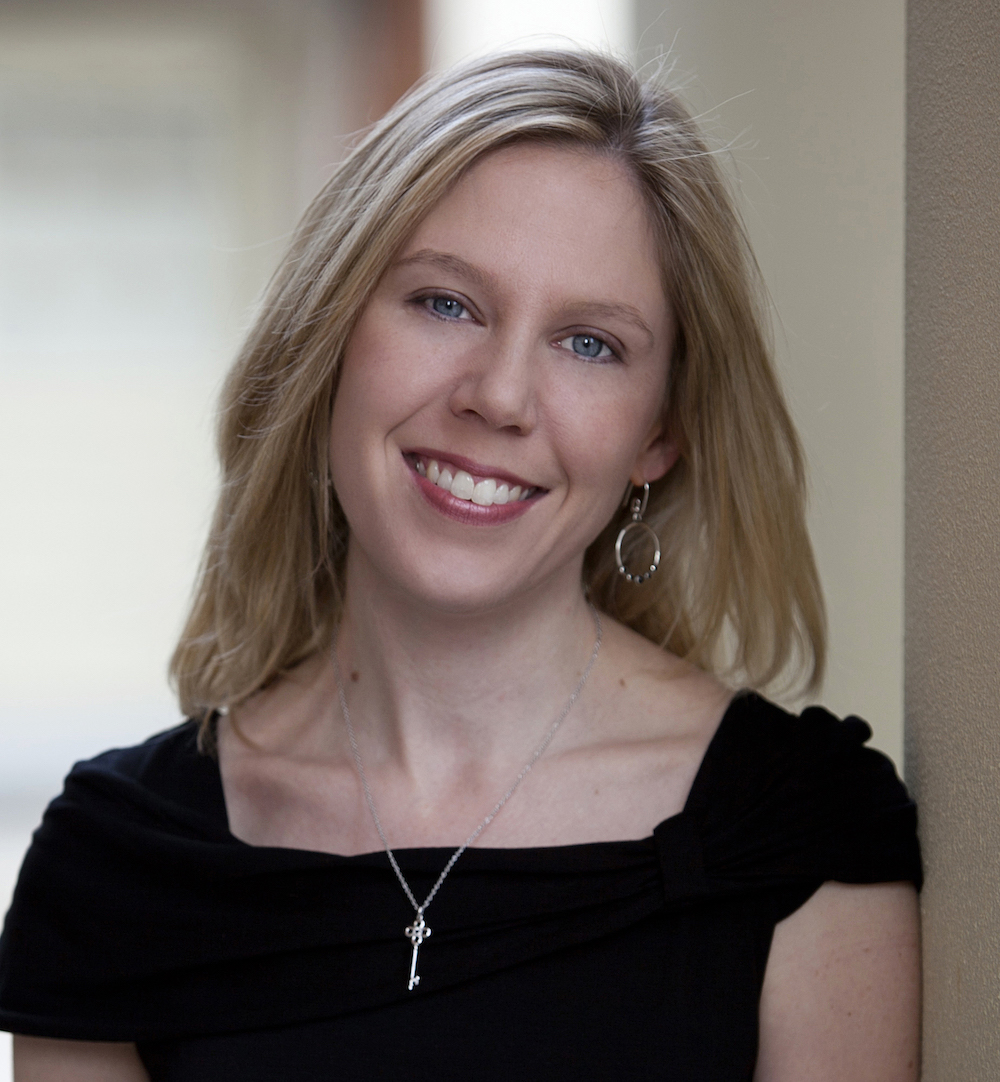
We at The Book Doctors love National Novel Writing Month (NaNoWriMo). For those of you who don’t know, they are an organization that gets together in informal ways all over the world, and in the month of November, WriMos (NaNoWriMo participants) write 50,000 words. No plot, no problem. Many, many writers have gone on to get book deals after participating. Every year, we do an online Pitchapalooza with NaNoWriMo, and we get some fantastic pitches. One of our winners, Stacy McAnulty, had such a great pitch, and wrote such a wonderful book, that she got a book deal. Her book is out now, so we wanted to check in with her to see what it was like to go from NaNoWriMo to getting a book deal. We’re doing another online NaNoWriMo Pitchapalooza until March 31, 2016. See below for details.
ANY PARTICIPANT WHO BUYS THE ESSENTIAL GUIDE TO GETTING YOUR BOOK PUBLISHED  GETS A FREE 20 MINUTE CONSULTATION WITH THE BOOK DOCTORS (email with proof of purchase to [email protected])
GETS A FREE 20 MINUTE CONSULTATION WITH THE BOOK DOCTORS (email with proof of purchase to [email protected])
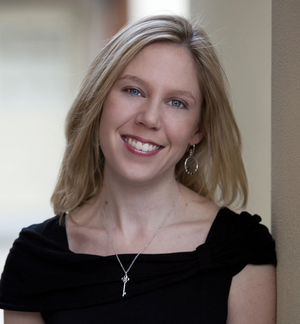

The Book Doctors: What were your favorite books as a kid, and why?
Stacy McAnulty: We’re starting with the question that always embarrasses me because I didn’t read as a young kid. I can remember sitting in fourth grade with the book How to Eat Fried Worms open on my desk, and instead of reading the words, I literally counted them. I’d count all the words, then turn the page so the teacher would assume I was quietly reading.
Also, we didn’t have many books in the house. I remember enjoying Little Golden Books and the picture book The Fourteen Bear Summer and Winter (which was held together with duct tape).
I didn’t fall in love with a book until high school, and that was Pillars of the Earth by Ken Follett. I never counted the words in that book. It’s about 1,000 pages; the word count must be in the mid six-figures. That novel blew me away and was also held together with tape.
TBD: What made you want to do something as ridiculous as write a book?
SM: It is ridiculous! It’s a crazy challenge similar to climbing Mount Everest or swimming the English Channel. But I guess what appeals to me about writing a book (over climbing or swimming) is you can do it in your PJs. And while eating gummy worms. And you likely aren’t going to fall to your death or be eaten by a shark. Not much physical danger involved in writing a book. Though today my right shoulder is a little tight.
I have to write. It’s almost a sickness. Plots, crazy ideas, and conversations with imaginary characters are constantly running through my head. The only way to get these persistent thoughts out of my head is to write them down (or type them up). Maybe it is a sickness?! Multiple Mass Ideas Sickness. Obsessive Writing Disorder.
TBD: Where did you get the idea for The Dino Files series?
SM: My son asked for a “real-life dinosaur” for his fifth birthday. Obviously, he was about sixty-five million years too late. I started writing the first draft for him. I’d write a chapter during karate class and read it to him immediately after. It was great motivation having someone eager to hear the next segment of the story.
TBD: What were some of the joys and difficulties of writing in the voice of a kid?
SM: I’ve been told I’m immature (not sure if it was meant as a compliment, but I’ll take it). I like to joke around, and I love to learn. Isn’t that the makings of a kid? Children get to be crazy. They can blow a giant bubble with gum and truly believe this is a reasonable transportation method for traveling to the moon. Their world has many rules. Don’t touch that. Don’t go there. Quiet down. Be still. But their imaginary worlds are still full of endless possibilities. Gravity? We don’t need no stinkin’ gravity. Writing for kids lets me be a kid.
As for difficulties? There are some limits to the language and sentence structure. Fortunately, I have a limited vocabulary. You don’t want to discourage a reader, but you also don’t want to talk down to a kid. They’ll pick up on that quick. The biggest challenge in The Dino Files series is the word count. My editor wanted between ten and eleven thousand words. We needed to leave room for Mike Boldt‘s pictures and teaser chapters for the next book. That meant reducing the first manuscript by twenty-five percent. Cutting can be harder than adding words. At least for me. I had to slash jokes, description, and even characters. I learned to stay true to the story and focus on the action.
TBD: Did you have kids read the book as you were developing it?
SM: In general, I only share my work with the kids I cook dinner for–which is a small group of three. As I mentioned, I read the first draft to my son as I was writing it. Unfortunately, young kids don’t appreciate revision. When I created the next draft, I asked my son if he wanted to hear it. The answer was no. Luckily, I have two other kids. My eldest is a teenager. You want honest feedback? Ask a teen to critique your work. She read the next few drafts aloud to me. It’s great to hear your words interpreted in someone else’s brain and mouth. She also loved to point out my inconsistencies, and she would yawn dramatically at the boring parts (which have all now been cut!).
TBD: How did you go about getting your book deal?
SM: I’d published a picture book in 2013 with a small press (unagented). I knew that if I wanted a career, an agent was vital. I entered contests and went to conferences. But, in the end, I was pulled from the dreaded slush pile. I queried my now-agent with a picture book. I was sending out about a dozen queries a month. Lori Kilkelly offered representation based on that book, but I asked her to read The Dino Files before I accepted her offer. I wanted to know if she liked my longer works as well. Lori did see potential in The Dino Files. Potential is code word for needs another revision.
About seven months later, we went out with The Dino Files. Random House Kids replied a few weeks later: What a great read! Does the author have ideas for future books in the series? Those are the moments writers live for.
TBD: What are you doing to promote and market your book?
SM: Marketing a book for kids is tricky. You want to connect with the reader, which, for The Dino Files, are kids ages seven to ten. But this demographic doesn’t have Twitter or Facebook accounts, not to mention credit cards for online buying or the ability to drive the minivan to the bookstore. So I need to connect through the adults in their lives first. I offer free Skype visits for classrooms. I’ve created a website with printouts and videos that parents and teachers can share with their kids. I’ve sent postcards to libraries and bookstores. I know there are dino-loving kids out there. I want to meet them. I want them to tell me I say Deinonychus wrong. I want them to tell me what kind of dinosaur would make the best pet. I want to inspire future paleontologists (and future writers!).
TBD: It’s so exciting to get a three-book deal. Are you already working on the next book?
SM: All the books are done and hitting shelves this year! The Dino Files series is intended for kids in elementary school. We hope they fall in love with the first book. And if they do, we can’t expect them to wait a year for the next book. Kids are binge readers. They want more. We are ready to give them more.
I’m currently working on a middle-grade novel about a twelve-year-old math savant. She has been homeschooled and is technically ready for college, but her grandmother insists she give public middle school a try first. And I’m always working on picture books.
TBD: How did National Novel Writing Month help you write your book and get it published?
SM: Full disclosure, the first draft of The Dino Files was not an official NaNoWriMo win. The word count was only twenty thousand. (And the printed version is under eleven thousand.) But I have completed the fifty-thousand-word NaNoWriMo marathon three times. NaNoWriMo makes you accountable. Resolutions, promises written on sticky notes, self-imposed deadlines–none of these have the power and prestige of NaNoWriMo. NaNoWriMo could only be improved if, somehow, they could send an electric shock through your keyboard when you failed to meet a daily goal or if there was a multi-million-dollar cash prize at the end.
TBD: We hate to ask you this, but what advice do you have for writers?
SM: Yep, this is a tough question. Luckily, I have a definitive answer on what all writers must do. I’ll call it Stacy’s Top Commandments on Writing.
- Never talk about your first draft. (This is actually one of Stephen King’s rules.) If you’re telling your spouse or your hairdresser or your hedgehog all about your next project, you’re wasting your breath. Unless your hedgehog can take dictation. These people likely don’t care. Or at least, don’t care as much as you do. And when you actually sit down to write your story, it’ll feel like work. So when a coworker or a neighbor asks what you’re working on, just give them a title. But be vague. Maybe something like Sunset at Dawn.
- Carry a book everywhere. No, not your phone with a book app, not your Kindle, and definitely not a tablet. Writers read. If you’re carrying a book everywhere, you’re likely to read it. And it’s good karma to “advertise” another writer’s book.
- Compare yourself to everyone. Let’s be serious. You’re going to do it anyway. I’m just giving you permission. That way, you won’t feel guilty. Compare yourself to bestselling authors. Compare yourself to the guy in your critique group that just got a six-figure deal for a memoir about camping with his three-legged dog. Compare yourself to Jennifer Lawrence (because we all secretly want to be Jennifer Lawrence or her best friend). When you’re done comparing, move on to number four.
- Write every day. I hate this rule. It’s a cliché at this point like New Year’s resolutions and diets that start tomorrow. But…I do believe this strategy (can you call three words a strategy?) works for a first draft. You must add to your work in progress each day. Or you risk your pesky muse fleeing the scene.
- Get professional help. Of course, you may need help for your physical and mental problems, but I’m talking about your plot problems. Your character problems. Your spelling problems. You need to invest in yourself. I draw this inspiration from Vin Diesel. (Aren’t we all inspired by Vin Diesel?) He told a story on a talk show about saving up forty-some thousand dollars. Instead of buying a car or something flashy, he invested that money in himself. He made a small film with a friend to showcase his talent. That little movie led to a role in Saving Private Ryan. So if you are debating between buying a BMW and taking a writing class, take the class. Deciding between buying a Tesla and hiring an editor, get the editor. (Warning: And if you have forty-thousand dollars to pay an editor, I’m totally available.)
- Celebrate good times! It’s easy to get excited when an agent offers representation or when a publisher makes a deal or when a review is accompanied by a star. We know those are the rare, exciting moments in a writer’s life. But we must also celebrate the other big moments. When you type ‘the end’ on a manuscript, you deserve a dinner out. When you come up with that ultimate plot twist after you’ve been brainstorming (and crying about it) for a week, you deserve a glass of your favorite beverage. When you recover your work in progress from a fried hard drive, you deserve a glazed donut with sprinkles. (Guess how I spent my morning?) Take the time to celebrate your victories.
- You need writer friends. Of all my rules, this is a must. I would not be a published author without the support of my writerly friends. Your family won’t understand your problems and frustrations. Unless you are a family of writers. Your non-author friends won’t understand plot arcs and rejection letters. Your neighbors don’t understand these acronyms: WIP, YA, ARC. Writer friends can empathize like no others. They will listen for hours about rejection letters while your mom will give you two minutes (tops!) and then she’ll suggest you try something new like painting because you always liked to color when you were a child. Just today, a writer friend convinced me not to quit a project I’ve already sunk a year of my life into. Writer friends have given me advice on everything from how you organize an author visit, to how long should I wait before following up with an editor, to does this author photo make me look fun or crazy? Writers, while not exactly a rare breed (nine out of ten retirees are working on a memoir, and the other one has a picture book called The Adventures of [insert some animal that her grandson just loves]), work best in a nurturing, warm community. Just like bacteria.
Sixth Annual NaNoWriMo Pitchapalooza
For those of you not familiar with Pitchapalooza, here’s the skinny: You get 250 words to pitch your book. Twenty-five pitches will be randomly selected from all submissions. We will then critique the pitches online so you get to see what makes a great pitch. We will then choose one winner from the group. The winner will receive an introduction to an agent or publisher appropriate for his/her manuscript. We will also crown a fan favorite who will receive a free one-hour consult with us (worth $250).
Beginning February 1, 2016, you can email your pitch to [email protected]. Please do not attach your pitch, just embed it in the email. All pitches must be received by 11:59PM PST on February 29, 2016. The 25 random pitches will be posted on March 14, 2016. Winners will be announced on April 1, 2016. Anyone can vote for fan favorite, so get your social media engine running as soon as the pitches go up!
Learn more about the sixth annual NaNoWriMo Pitchapalooza here.
Stacy McAnulty grew up outside of Albany, New York and received her B.S. in Mechanical Engineering from the University at Buffalo. She currently lives in Kernersville, NC with her three children and two dogs. The Dino Files chapter book series follows a nine-year-old dinosaur expert, his paleontologist grandparents, a cat named Saurus, and fossils that might not be so extinct!
Join our newsletter to receive more interviews and tips on how to get published.

We first met Jenny Milchman when we heard about some crazy book tour she was doing that seemed almost as ridiculous as the book tour we were doing. Essentially, The Book Doctors have been on tour for seven years, during which time we’ve done over 300 events. We wanted to connect with Jenny to see how she was doing it, and maintaining her sanity. When we reached out to her, we found out she was not only a wonderful writer, but also a wonderful human, generous, smart, funny, down-to-earth, full of joy and expertise. Now that she has a new book out, we thought we might pick her brain about books and writing and yes, touring.
To read this interview on the Huffington Post, click here.
The Book Doctors: How did you first become interested in being a writer?
Jenny Milchman: I don’t remember a time when I didn’t want to be one. In fact, the desire, or predilection, or bug apparently predates conscious memory. All of my [failed] college essays began with the line, “I wanted to be a writer before I knew how to write,” which came from an anecdote my mother told about how she used to write down bedtime stories that I dictated at the age of two.
TBD: How did you learn how to become a writer?
JM: I did a lot of workshop-type things between high school and college. Summer Arts Institute in New Jersey was formative, and I studied with poets like the late Kenneth Koch and Robert Kelly in college. But the way I learned to write a novel, a whole, structured work of long-form fiction, instead of just scribbling lines and starts until I’d lost interest, was by reading every book on craft I could get my hands on. I called it my self-inflicted MFA and during the years I was inflicting it, I must’ve read every book in the Writer’s Digest catalog. And a whole lot more. Albert Zuckerman of Writers House fame wrote a great book called Writing the Blockbuster Novel. Donald Maass wrote The Breakout Novel. Anne Lamott, Bret Lott, Stephen King, James N. Frey–not the scandalous one–the list goes on and on and on and on. Those authors schooled me more than any class.
TBD: What are some of your favorite books, who were some of your favorite authors, and why?
JM: Oh, gosh, this is always the toughest. Impossible really. I loved the great short storyists growing up. Shirley Jackson’s “The Lottery,” Richard Connell’s “The Most Dangerous Game,” W.W. Jacobs’ “The Monkey’s Paw.” Anything by O. Henry. I studied the Victorians in college and all three Bronte sisters, George Eliot, and Henry James were great favorites of mine. But perhaps the most visceral authors, the ones who really took my heart in their hands and squeezed it into a ball, were the great horror writers of the 1970s. Ira Levin, Frank De Felitta, David Seltzer, William Peter Blatty, and of course, Stephen King.
TBD: How did you get your first book deal?
JM: It took me 11 years, 3 agents, and 8 novels before I finally landed a book deal with Ballantine. How it happened required all eleven of those years: reading those books on craft, going to events at bookstores and seeing how real authors did it, building a circle that included people like you, David, and Arielle. But in the sense that big events do come to one single moment in time…this one rested on a favorite author, Nancy Pickard, who read my eighth novel in manuscript form and passed it on to her editor. I’ve been with the same editor for both books since my debut, and I hope we never part. My third novel is dedicated to Nancy and our mutual editor.
TBD: How do you deal with rejection?
JM: I stomp around and cry and whine and scream. I break computer screens. Seriously–when a much loved bookstore declined to do an event with me, I fell over my computer sobbing, and the screen cracked. Don’t be like me.
Rejection is part and parcel of this business–I just never got good at accepting that.
TBD: What is your new book about?
JM: If I tell you that As Night Falls is about two convicts, one huge and one wiry, who escape from an Adirondack prison, would you believe me? But on a deeper level, it’s about how a mother’s love can go awry, twisting and thwarting the generations to come in one unending double helix. When the convicts encounter a family contained by a snowstorm in their mountain home, only unveiling the secrets from the past will allow for true escape.
TBD: Why did you decide to go on the longest book tour in the world, and how did you go about setting it up?
JM: You mean not every published author rents out her house, trades in two cars for an SUV that can handle Denver in February, asks her spouse to work from the front seat while the kids are car-schooled in the back, and hits the road for 50,000 miles? What??? Oh right. My publisher was skeptical, too.
But when it takes you eleven years to get published, you either make a lot of friends or a lot of enemies along the way. I was lucky enough to make friends. And when I finally had a book released, I wanted to go out and thank them. Face-to-face. The world’s longest book tour–as Shelf Awareness called it–made the virtual world come alive, and that’s when true magic sparks, in my opinion.
And since my debut novel wound up going into six printings in hardcover, people became a little less skeptical. I wouldn’t say that sending authors around the country for seven months has quite become standard operating procedure for the Big 5, but by this third tour, my publisher is helping with some of the events and cost. I also have a crack independent publicity team, a husband who is heck at the traveling salesman problem, and a whole country full of bookstores, libraries, book clubs, writers’ organizations like Sisters in Crime, and readers who know how to unroll one beautiful red carpet.
TBD: What are some of the things you love and hate about being a professional writer?
JM: At the risk of sounding Pollyanna-like, I love almost everything about it. This might be due to the whole eleven year thing. I’m so grateful to be where I am–I get paid to make up stories, and people actually want to read them–that sometimes it’s hard to see straight. Seeing a book of mine on a shelf catapults me back to the time when I was a small child, reaching for a title, and knowing that a whole other world awaited me inside. Getting to meet other writers, readers, booksellers, librarians, reviewers, journalists, interviewers, radio personalities, TV hosts, editors, agents, publishers…the people who keep this world of words churning, is an honor every single time. Writers’ conferences are sheer bliss for me. There’s one coming up–ThrillerFest–and I get tingles of excitement imagining being there. I honestly can’t think of a more thrilling industry–and we’re not as mean as Hollywood or Nashville.
But one thing does bum me out. I have trouble getting past a bad review. At least I haven’t broken any computer screens over a review. Yet.
TBD: When you win the Mary Higgins Clark award, does she come to your house and hang out with you? Who do you have to pay to win one of those awards?
JM: Well, in all seriousness, Mary does hand the award to you herself. And let me tell you, she is the most elegant doyenne anyone could hope to meet. After eleven years of rejection, that night provided balm for some wounded nerves. I would’ve paid a lot for it, but the truth is I think the awards process is fairly pure. A few years ago, I judged a major award and was a conduit for the most representative taste, not the big hits, nor the expected favorites, or the books that got the biggest push. It’s gratifying to me, especially as we come up to a big election year, that some things really can’t be corrupted.
TBD: I hate to ask, but what advice do you have for writers?
JM: Do ask! Please ask! I love this one. First, come find me, either virtually or on the road, because sharing, not advice (what do I know?), but a compendium of perspectives, tips, and stories gleaned from meeting many, many writers, struggling and successful, as well as publishing people, is one of the things I most love to do.
But if I had to boil all advice down to one single nugget it would be this. Know that anything we write can always use more work. It is never as good or done as we think it is. Critical feedback is like gold. Whether we accept it or not. Hearing different takes on what we create is the only way we will make it appeal to a broad range of readers. And that’s what we’re all hoping for, isn’t it? That’s why we write and read. To find the story that will carry us away.
Jenny Milchman is the author of the summer thriller, As Night Falls, a July Indie Next Pick. She has just hit the road on her third “world’s longest book tour.” Find her–literally–at http://jennymilchman.com/tour/bring-on-the-night-2015.
To receive more interviews like this one, join our newsletter.
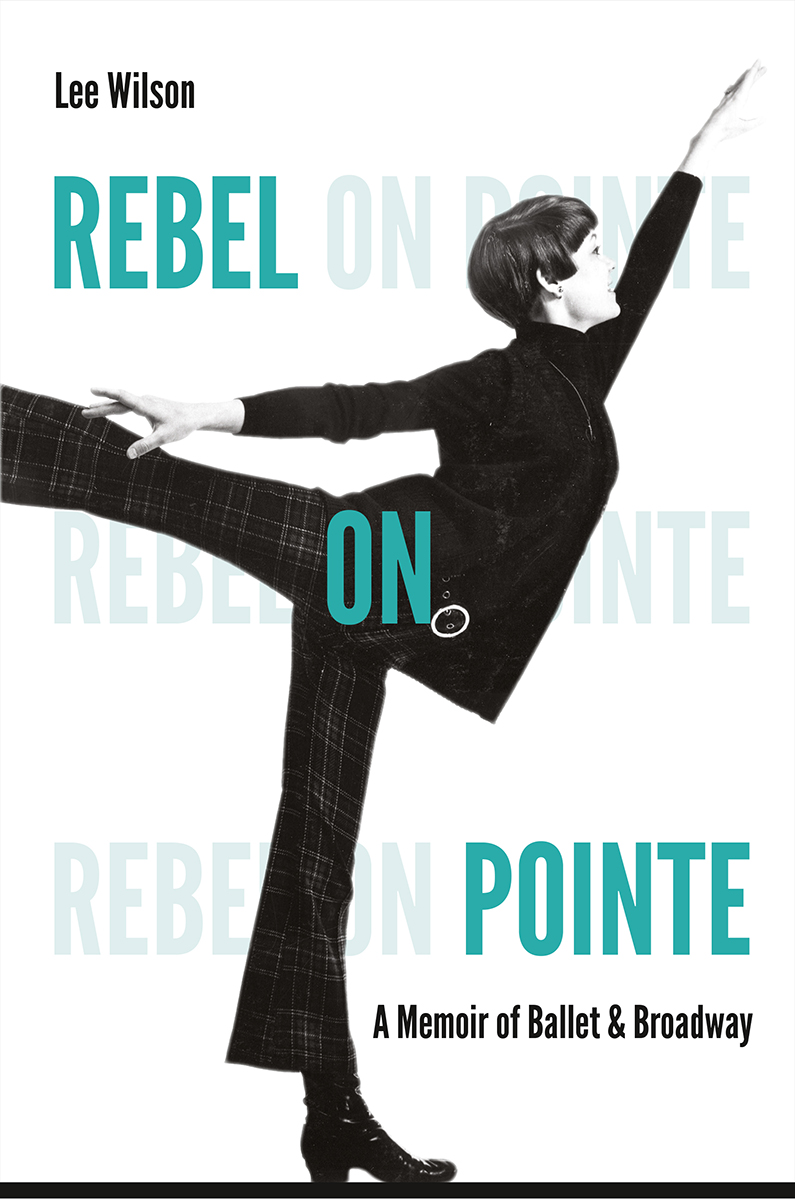
The Book Doctors met Lee Wilson at a Pitchapalooza (think American Idol for books) at a fantastic bookstore called pages: a book store, in Manhattan Beach, California. She was so warm, funny, passionate and professional. And she had excellent posture! Turns out that was no accident. She had been a professional dancer at the highest level. She blew us away with her pitch. We helped her with her proposal, and with the help of the amazing Toni Bentley, we hooked her up with a fantastic publisher, University Press of Florida, who does the exact kind of book she was proposing. And now, the book, Rebel on Pointe: A Memoir of Ballet & Broadway is coming out. So we thought we’d pick her brain about books, publishing, writing, and dancing.


The Book Doctors: Is it harder to be a professional dancer or writer?
Lee Wilson: I made my professional debut as a classical ballet dancer when I was sixteen. At that time, and for the next ten or fifteen years, it would have been harder to be a writer. I didn’t have the life experience, the perspective, the knowledge, or the patience I have today. At sixteen, I wanted to be financially independent. I wanted to tour the world with a ballet company and work with great dancers, like Nureyev, Bruhn, and Hightower. And I did. I danced for royalty in Monte Carlo, gun-toting revolutionaries in Algeria, American aristocrats at the Metropolitan Opera, and a galaxy of stars on Broadway, and I loved every minute of it. But the highpoints of my dance career are past, so today I would find it difficult to be a professional dancer. On the other hand, as a writer, I’m just getting started. I’ve written for TV, but Rebel on Pointe is my first book. Everything about publishing is new and exciting. Every day brings a new challenge — every day a new thrill. So today, I’d rather be a writer.
TBD: What made you decide to write a memoir?
LW: People have been telling me ever since I was twenty-one that I should write my life story, but I didn’t think about it seriously until 2008 when I was finishing my degree in Performing Arts through St. Mary’s College of California. I was writing about the subculture of dance and the great dancers and choreographers of the late 20th century, and I saw how my personal story intersected with the story of women’s rights and the transformation of American dance during the 1950s and 60s, and I thought that was a very interesting story.
TBD: What were some of the difficulties and pleasures of writing about your life?
LW: The biggest difficulty was getting a balance among the stories — personal, political and dance — because they’re all intertwined: I decided to become a dancer not only because I loved to dance, but also because I wanted to live in a community where men and women were equally respected and equally paid, and in the 1950s, that rare community was dance. While I was writing the book, I wanted to make sure that even young readers would understand the culture of the 1950s when the majority of American women were housewives, and it was legal and common to deny women jobs simply because they were women. Getting the right balance of information was tricky.
The greatest pleasure of writing about my life was reliving and reassessing the highlights of my dance career and recognizing how very fortunate I was to be a professional dancer and to live in the multicultural community of dance.
TBD: How did you go about finding a publisher?
LW: The publisher found me — thanks to you! I went to Pitchapalooza at {pages} bookstore in Manhattan Beach because I knew that when you heard my quick pitch for my memoir, you could make it better. You not only improved the pitch, but after we refined my book proposal, you sent the proposal to Toni Bentley, who sent it to the University Press of Florida. Bingo! I had a publisher.
TBD: What was it like working with your editor and publisher? How did it compare to working with a director in your dance career?
LW: I loved working with both of my editors. My acquiring editor, Meredith Morris-Babb, is the Director of the University Press of Florida. She worked with me on the big picture–content and tone. She also sent the manuscript to dance historians and gave me the benefit of their comments. After that, my project editor, Nevil Parker, worked with me on the details.
The writer/editor and the dancer/director relationships are both collaborations, but the dynamics are different. As the writer of a memoir, I was telling my own story, and the editors advised me on how to tell it. As a dancer, I was working with directors to help them tell their stories or someone else’s story.
TBD: What life lessons did you learn from being a dancer?
LW:1) Hard work is essential for success. If you don’t work hard, you can’t compete.
2) Auditions are never a waste of time. The job you don’t get today might lead to a job tomorrow.
3) Find your passion. Passion will give your life meaning and direction and will lead you to a community where the passion of others will reinforce your own.
TBD: What life lessons did you learn from being a writer?
LW: 1) Writing about a subject–no matter how well you know it–gives you greater insight.
2) Make sure the big decisions are right because if they aren’t, the little ones don’t matter.
3) When you start down a road where you’ve never been, find people who know the road and let them guide you.
TBD: What advice do you have for dancers?
LW: Dance will enrich your life whether or not you have a career as a professional dancer. I’ve never met anyone who said, “I wish I’d spent less time dancing,” but I know many who say, “Dance is the joy of my life.”
TBD: What advice do you have for writers?
LW:In his iconic book Screenplay, Syd Field wrote, “The ending is the first thing you must know before you begin writing.” For me, this has been excellent advice. I know that some writers like to throw their characters into the ocean and see what happens. I don’t. When my characters hit the water, they’re swimming toward a specific point in the distance. They may take interesting detours; they may flash forward and flashback, but the end is a defined place, and my characters are moving toward that place from the moment I write “Chapter One” or “Fade In.”
Lee Wilson made her debut as a classical ballet dancer in a command performance for Prince Rainier and Princess Grace in Monte Carlo. She toured Europe with the Hommage au Marquis de Cuevas, was première danseuse of the Bordeaux Opera Ballet, and danced with the Metropolitan Opera Ballet. Her Broadway shows include Hello, Dolly!, How Now Dow Jones, You’re a Good Man, Charlie Brown, and Meet Me in St. Louis. Lee wrote and produced the award-winning TV movie, The Miracle of the Cards. Her website is leewilsonpro.com
Arielle Eckstut and David Henry Sterry are co-founders of The Book Doctors, a company that has helped countless authors get their books published. They are also co-authors The Essential Guide to Getting Your Book Published: How To Write It, Sell It, and Market It… Successfully (Workman, 2010).
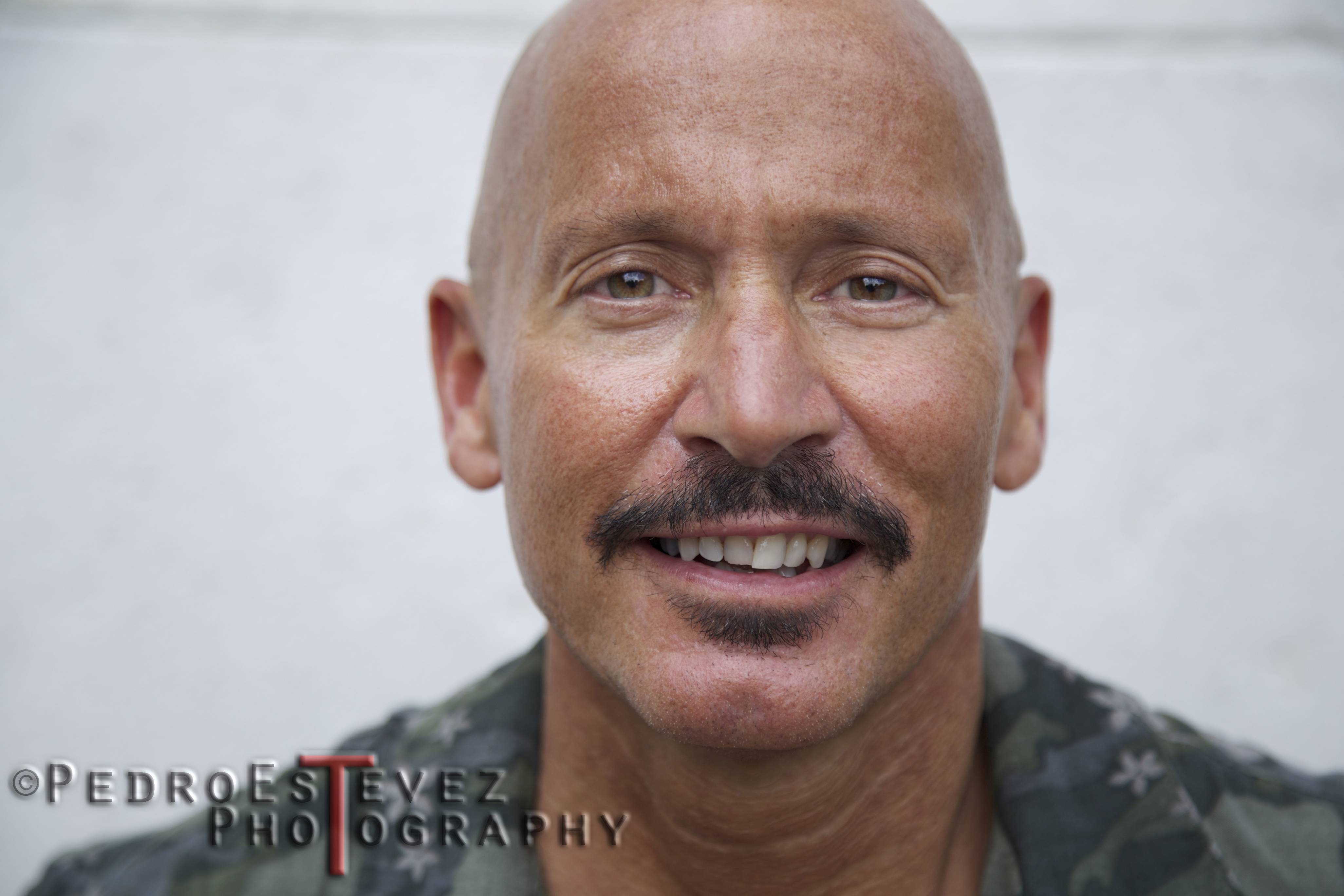
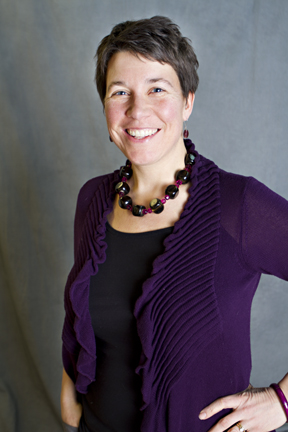
The Book Doctors met Cari Noga in 2011, when she won our National Novel Writing Month Pitchapalooza (think American Idol for books). Her pitch was spectacular, haunting and superbly crafted. Her story is about a 12-year-old boy with autism who witnesses the Miracle on the Hudson plane crash, and how he and other crash witnesses and survivors find their lives intersecting and transformed by the extraordinary event—and by each other. We worked with her on her novel Sparrow Migrations and discovered it was a richly wrought tapestry of human emotion, both beautifully plotted and a delightful read. The novel was a semifinalist in the 2011 Amazon Breakthrough Novel Award contest, and the spring 2013 winner of the ForeWord Firsts contest sponsored by ForeWord Reviews. Cari herself was already a published author (Road Biking Michigan with Globe-Pequot Press in 2005). When we sent her book out to our agent and publishing contacts, we were shocked that no one snapped it up. The problem is she’s not famous. There are no zombies or werewolves in her book. No S&M involving rich people. Just a great story with great characters about a world-famous event. So Cari decided to self-publish in April, 2013. Sparrow Migrations was just named a literary fiction category semi-finalist in the Kindle Book Review’s 2014 Kindle Book Awards. So we thought we’d pick her brain and the beauties and terrors of self-publishing literary fiction.
The Book Doctors: The general wisdom is that self-publishing literary fiction is especially difficult. Do you agree with this wisdom? If so, how have you gotten around these difficulties? If not, why not?
Cari Noga: I think publishing anything that isn’t directly aimed at a genre-specific audience is more difficult, whether you go the self-pub route or traditional. The upside is that if you do reach a literary audience, the potential is much wider. I seem to have found a niche with book clubs, starting right in my own community, and rippling outward—I just did a Skype chat with a club in Phoenix. My town has a strong sense of locavorism –people like to buy local, eat local, etc. I think that extends to reading, too. One suggestion to make locavorism work for you: Check whether your library offers book club kits – multiple copies of the same book, available for simultaneous checkout. Mine does, and when I did an appearance, I asked that they create a kit
TBD: What has been the single most difficult thing about self-publishing?
CN: Retail distribution. I was aware that I would have to offer discounts, but I did not appreciate enough the importance of offering returns. My book is available through Ingram & Baker and Taylor, but as a POD book there is no way to return it.
TBD: What has been the single best thing?
CN: Hearing from readers, especially in the book club settings. Free time is my own most prized resource, so to know that people are spending theirs reading my book is incredibly gratifying. Hearing that they like it, that the characters resonate authentically, and that they’ve learned something – whether about autism, birds, or something else – is like having my cake, icing and ice cream, too.
TBD: What marketing strategy has been most successful? What has been least successful?
CN: Most successful by a longshot: Kindle giveaways. I’ve done two (June 2013, 5,400 copies downloaded; Jan. 2014, 33,600 copies downloaded.) Paid sales increased after each and reviews soared. The January one was advertised on Bookbub, which I also recommend.
Least successful: Advertising in trade journals like PW Select. Not because the ads were bad or poorly designed, but the brick-and-mortar bookseller audience that reads them are predisposed against self-published books, especially POD like mine, due to the inability to return unsold copies and the inconvenience of dealing with an individual publisher.
Book clubs are still proving a good audience – I’m a guest at three different live discussions here in town next month and my first by Skype, with a club in Phoenix that somehow latched onto it.
TBD: How have you convinced independent bookstores to carry your book?
CN: Goes back to locavorism. I have two indie stores in my town that are both eager to work with local authors. I had a relationship with one (Horizon Books) going back to a nonfiction book (Road Biking Michigan) I published traditionally ten years ago and was fortunate to have one staff member be a beta reader. They have two other stores in northern Michigan as well. The other newer store is Brilliant Books, a cozy, customer-centric place that hosted my launch. I showed them both copies while in proof stage, asked them to carry it and offered industry standard discounts. Another store contacted me after reading local media coverage. A few other stores have been receptive to cold calls.
TBD: Would you still like to see your book published by a major publisher? If so, why?
CN: I would like to see my book in more bookstores. At the book clubs I visit, more people bring paper copies than Kindle, so I’m concluding there’s more potential for the paper copy than I’m getting in my half-dozen stores and on Amazon. However, I’d be much more cautious about the deal I’d sign than I would have two years ago. More than a publisher, right now I would like an agent who could advise me about the best moves to make not only for this book, but career-wise.
TBD: Are you working on a next book? If so, what is it about? Tentatively titled Tres Vidas, my next novel is, like Sparrow Migrations, a story about relationships. The three lives that intersect are Lucy, a suddenly-orphaned 9-year-old who must leave her NYC home to live on a northern Michigan farm with her prickly aunt Jane, and Miguel, a migrant worker who becomes a bridge between the two.
CN: How did you get 180 reviews of your book on Amazon?
TBD: Reviews spiked after the giveaways. After the initial release in April 2013, when I ran into people who told me they liked the book – in person, by email, on social media –my standard reply was to ask them to write a review on Amazon or Goodreads. A surprising number actually did, and I got up to about 20 reviews that way. That doubled after the first giveaway. After the second giveaway, timed to the fifth anniversary of the Miracle on the Hudson plane crash, which is the starting incident in the book, they just came pouring in. I’ve not solicited any reviews in months.
TBD: You enrolled in Amazon’s KDP select program. Was the exclusivity they requested worth it?
CN: Yes – see the giveaway results above. I do plan to expand to other platforms (Nook, Kobo) this year.
TBD: We can’t help but ask how you view the Amazon/Hachette tug of war since you used Amazon’s publishing program. Thoughts?
CN: I think there are far more shades of gray to the situation than have emerged in the mainstream narrative (Amazon: evil corporate behemoth; Hachette, guardians and saviors of literature.)
J.A. Konrath http://jakonrath.blogspot.com/ says that in this mad, crazy publishing world of the moment, the only two people who matter are the writer and the reader. Everyone else in a middleman who has to prove their value. Right now, Amazon is connecting those two best. They also treat authors better financially (Both my books are priced at $14.95. I get about $4 per novel sold vs. 75 cents for my Road Biking book, which was taken out of print.*) More people are reading, thanks to the Kindle, which has added another revenue stream for authors.
Meanwhile, the ranks of indie bookstores are actually growing as they embrace what they do best: curation and customer service. In my town, Brilliant Books, for example, offers free shipping. At Horizon, membership program fees drop by a dollar every year, encouraging renewals. Healthy marketplaces do generally have more players vs. fewer, so I hope Hachette and the Big Five can survive. But in terms of blame for the situation they’re in, as others have said (See exhibits A was, B and C ) I’d point to the mirror as much as Amazon.
Cari Noga self-published her debut novel, Sparrow Migrations, in April 2013. The novel was a semifinalist in the 2011 Amazon Breakthrough Novel Award contest, the spring 2013 winner of the ForeWord Firsts contest sponsored by ForeWord Reviews, and was just named a literary fiction category semi-finalist in the Kindle Book Review’s 2014 Kindle Book Awards. A former journalist, she also traditionally published Road Biking Michigan with Globe-Pequot Press in 2005. Read her blog or sign up for her author newsletter at www.carinoga.com.
Arielle Eckstut and David Henry Sterry are co-founders of The Book Doctors, a company that has helped countless authors get their books published. They are also co-authors of The Essential Guide to Getting Your Book Published: How To Write It, Sell It, and Market It… Successfully (Workman, 2010).
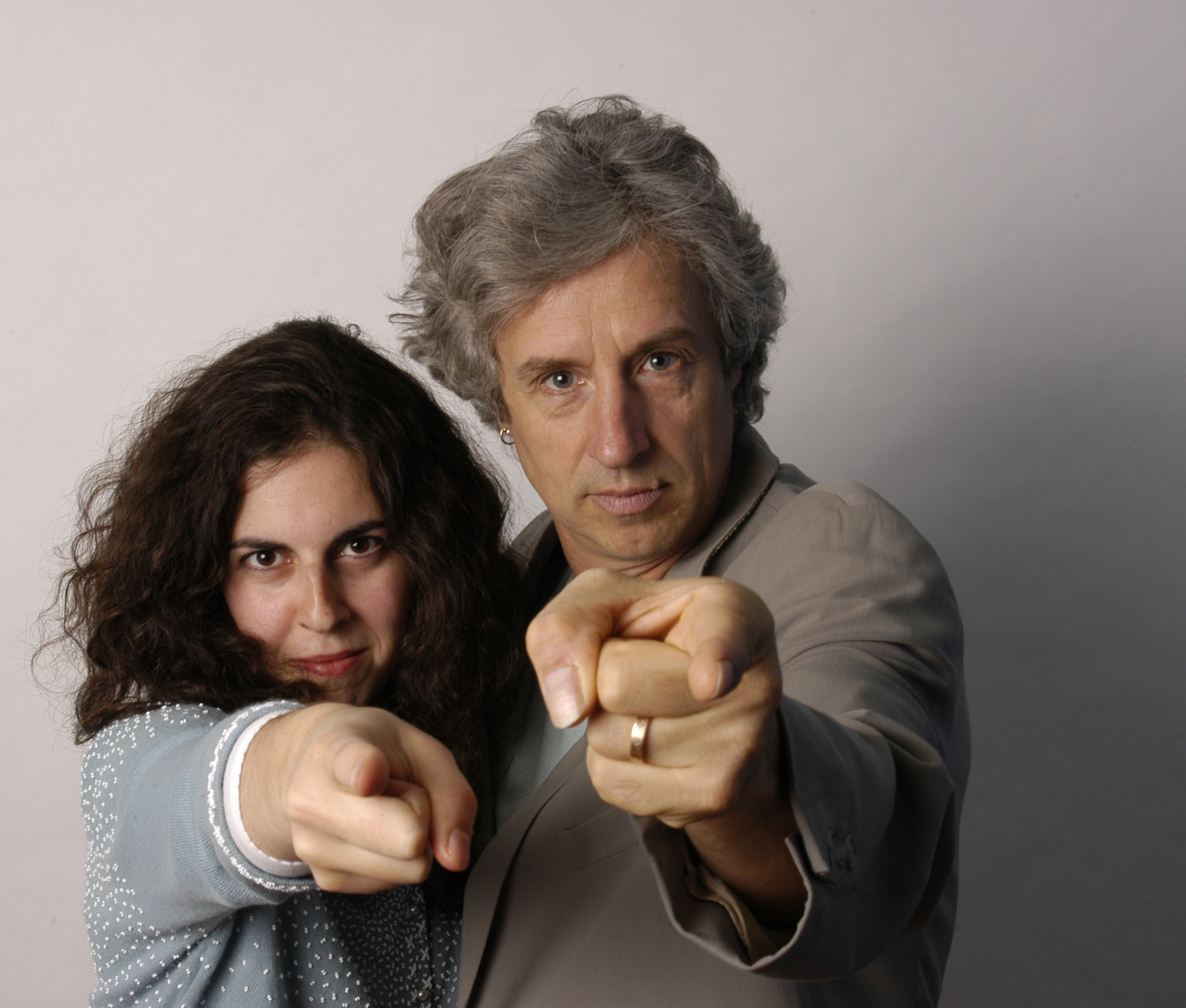
It’s the greatest time in history to be a writer. There are more ways to get published than ever before. While it’s great to have so many options, it’s also confusing. But when you break these many different ways down, they sort themselves out into just three primary paths: 1) The Big 5: HarperCollins, Penguin Random House, Simon & Schuster, Hachette and Macmillan, 2) Independent presses that ranges in size from the hefty W.W. Norton to the many university presses to the numerous one-person shops. 3) Self-publishing. In our over 35 years experience in the publishing business as agents, writers and book doctors, we have walked down all three paths–and we have the corns, calluses and blisters to prove it. To help you avoid such injuries, we have mapped out the pluses and minuses of these three paths in order to help you get successfully published in today’s crazy Wild West world of books.
1) The Big Five: Since publishing has gone from being a gentleman’s business to being owned, run and operated by corporations, you have a much better chance of getting your book published if you are Snooki from Jersey Shore hawking your new diet manifesto than if you’re an unknown (or even established but not famous) writer who’s written a brilliant work of literary fiction. And since the corporatized publishing world continues to shrink at an alarming rate, there are fewer and fewer slots available, even though the competition is every bit as fierce for those ever-dwindling spots. Add to this the fact that, unless you are related to and/or sleeping with Mister Harper or Mister Collins, you will need to find an agent. Most of the best agents only take on new clients who are at the very top of the cream of the crop. Even new agents who are trying to establish themselves only take on a very small percentage of what they are pitched.
Writers who haven’t been published by The Big 5 assume that once they get a deal with one of these big fish, they’ll be able to sit in their living rooms and wait for their publishers to set up their interviews with Ellen and Colbert. They assume they’ll have a multiple city tour set up for them where thousands of adoring readers will buy their books, ask for their autographs, and shower them with the love and adoration they so richly deserve. We can tell them from hard-won experience that this is absolutely, positively, 100% not the case. Our first book together was with one of the Big 5. We won’t mention their name, and when we’re done with the story you will see why. When we went into our meeting with our publicity team, we were full of grand and fantastic ideas about how to promote and market our book, and were wildly enthusiastic about having a giant corporation that specializes in successfully publishing books behind us. Turns out our “marketing team” consisted of one guy who looked like he was 15 years old, and had 10 books coming out that week, and 10 books coming out the next week, and 10 books coming out the week after that. When we told him our grand and fabulous ideas he said in a cracking voice, “Well, good luck with that.” He did what he does with every book that comes out of this giant publishing corporation (unless of course your name is Stephen King, Bill Clinton or Snooki from Jersey Shore). He sent out a bunch of press releases along with a few copies of our book to all the usual suspects. Our book died on the line.
2) Independent Publishers. These publishers almost always specialize in a certain kind of book. They usually appeal to a niche audience. As opposed to the Big 5, who are generalists, and in theory at least, publish books for everyone. Again, these independent publishers are not owned by big celebrity-obsessed bottom line-driven corporations. That’s not to say they can’t be big companies. Workman, who published our book The Essential Guide to Getting Your Book Published, is one of the most successful publishers in the world. They’ve published everything from What to Expect When You’re Expecting to Bad Cats to the awesome Sandra Boynton oeuvre. But many independent publishers tend to be small, and run and/or driven by individuals who are passionate about the subject which they are publishing. A good number of these publishers are very well respected, and their books can be reviewed in the largest and most prestigious publications in the world. There are many stories of small publishers having gigantic successes. Health Communications, Inc., which published Chicken Soup for the Soul. Naval Institute Press, which published Tom Clancy’s first novel. Bellevue Literary Press, a publisher affiliated with New York University’s school of medicine, which published Tinkers, the Pulitzer Prize winning novel. Greywolf, Tin House, and McSweeney’s are all small independent publishers who regularly produce beautiful high-end fiction that wins awards and garners great press.
Chances are, you’re going to be the big spring book from your independent publisher. We speak from experience that it is so much better to be the big spring book from a well-respected independent publisher than it is to be book number 2,478 from Penguin Random. Because they’ve got Stephen King, Bill Clinton and Snooki from Jersey Shore to promote.
And the great news is, you don’t have to have an agent when querying most independent publishers. Almost all indies expect writers to submit directly to them. If you go onto their websites, they almost always give you very explicit instructions on how to submit. Do yourself a favor, give it to them exactly how they want it. Even better, try to research the editor at the press who would be best for your book and send your query directly to him/her.
Yes, there are limitations to many independent presses. Most independent publishers have limited resources. Most of them won’t send you on a tour because they don’t have the money, so you will be called upon to do your own book tour and events. That being said, our publisher Workman, sent us on a 25 city tour, which they paid for in its entirety–hotels, airfare, escorts (don’t get the wrong idea, these are book escorts, not industrial pleasure technician escorts). But there’s a good chance you’ll get to work with at least a decent and maybe even a great editor, who will help you shape your book. They will proofread your book. They will copyedit your book. They will design and execute a cover for you. And often times they’re much more flexible about author input than the Big 5.
The other issue with fewer resources is that if, for some reason, you should happen to catch literary lightning in a bottle and your book blows up, an independent press may not be able to capitalize on your book’s success. They may not have the bookers for Ellen and Colbert on their speed-dial. And often they have to do very small print runs, so there’s a good chance your book will sell out of its printing very quickly and there will be no books available. Whereas if you’re with one of the Big 5, and your book blows up, they’ll do a giant print run, and they’ll be making calls to all the big guns.
3) Self-publishing. William Blake. James Joyce. Virginia Woolf. Rudyard Kipling. Edgar Allan Poe. Ezra Pound. Mark Twain. Gertrude Stein. Walt Whitman. Carl Sandburg. Beatrix Potter. What do these authors have in common? All self-published. What a cool group to belong to. The fact is, self-publishing can be a ball. It can launch you into superstardom and turn you into a millionaire (okay, rarely, but just ask EL James, author of the fastest selling book in the history of the universe, Fifty Shades of Grey).
Self-publishing has recently been dubbed independent publishing, not to be confused with independent presses. This is in part because self-publishing has for decades been the ugly duckling/redheaded stepchild of the book business. Janis Jaquith, an NPR commentator and self-published author of <a href=”http://www.amazon.com/Birdseed-Cookies-A-Fractured-Memoir/dp/0738849111″ target=”_hplink”>Birdseed Cookies: A Fractured Memoir</a>, says, “When I announced to my writer friends that I was planning to self-publish, you’d have thought I’d just announced that I had syphilis or something. Such shame! Such scandal! I’m glad I didn’t listen to the naysayers, because I’ve had a ball.” The bottom line? This is not your daddy’s self-publishing. The onus of the ugly duckling redheaded stepchild is gone.
“Nowadays, because there is no barrier to publishing, we’re seeing people give up faster on the traditional route. These are people who are writing good books and turning to self-publishing. This means the quality of self-published books has gone up,” says Arsen Kashkashian, head buyer at Boulder Books. More writers are, indeed, seizing on the new technologies and low costs of publishing on their own because try as they may, they cannot break through the gate of the castle that holds agents, editors and publishers.
More than ever, we are talking to writers who are not even going after agents or publishers, because they don’t want to spend years being rejected. People are publishing books on their own because they choose to–because they see opportunities in the market and want a bigger share of the pie than publishers offer; because they want full control of their book; for some, because they just want a relic of their work to share with friends and family. And many writers choose self-publishing because they don’t want to have to wait for the sloooooow publishing machine. If you start looking for an agent or publisher right now, it can take years to find one. Maybe you’ll never find one. Then after you get a book deal, it’s typically going to take between 18 months and two years for your book to come out.
Here are some good reasons to self publish:
1) You have direct access to your audience
2) You want a bigger chunk of the retail dollar of your book
3) You have a time-sensitive book and want to publish fast
4) You want full control of your book inside and out, from your hands to your readers’
5) No matter how much you rewrite and how hard you market yourself, you can’t find anyone to agent or publish your book
6) You’ve written a book that falls outside the bounds of typical publishing–either because of its niche audience, regionality, experimentation of language, category, theme, etc.
7) You really want to publish a book, but you just don’t have the personality to market it to an agent/publisher.
8) You’ve written up your family history or the lifetime of a loved one that will be of great interest to Aunt Coco, Cousin Momo and a handful of other blood relations but no one else
The good news about self-publishing is that you get to do everything you want with your book. The bad news is that you have to do everything. Which means that unless you are a professional proofreader, graphic designer, and layout expert for printed books and e-books, you’re going to have to get someone else to help you. And writers can only edit their books themselves so many times before they lose all objectivity. We highly advise, if you’re going to self-publish, get a trained professional to edit your book.
As with any entrepreneurial project, you can spend between $0.00 to $100,000.00. David bartered with a top-drawer cover designer, proofreader, editor, and specialist who formats printed and e-books. It cost him exactly $0.00 to produce his <a href=”http://www.amazon.com/Confessions-Maniac-David-Henry-Sterry/dp/0985114908″ target=”_hplink”>self-published book</a>. So he started making a profit immediately. As someone who is an instant gratification junkie, it was absolutely fabulous how quickly it all came together. And when that box full of his books showed up at the door, he felt a special kind of life-affirming, rapturous ecstasy.
The good news is that anyone can get published. The bad news is that anyone can get published. So whatever you choose, you have to be the engine that drives the train of your book. And the same principles underlying a successfully published book are remarkably similar.
1) Research. Before you give up any rights or money or agree to work with anyone, make sure you research them thoroughly.
2) Network. Reach out to readers and writers, movers and shakers.
3) Write. Yes, it really helps if you write a great book.
4) Persevere. One of David’s most successful books was rejected over 100 times, by everyone from the top dogs of the Big 5, to some of the greatest literary agents in America, to countless University and independent presses. 100 top publishing professionals told him his book had no value. But tweaking and polishing and making it better, he finally landed a deal. That book ended up on the front cover of the <a href=”http://www.amazon.com/Hookers-Call-Girls-Rent-Boys/dp/1593762410″ target=”_hplink”>Sunday New York Times Book Review</a>.
To find out more about how to get your book successfully published today, ask questions about your book and your various options, and perhaps get a chance to pitch your book to The Book Doctors, sign up for their <a href=”http://bit.ly/1mzSGY7″ target=”_hplink”>webinar</a>, which will be on July 16.
Arielle Eckstut and David Henry Sterry are co-founders of The Book Doctors, a company that has helped countless authors get their books published. They are also co-authors of The Essential Guide to Getting Your Book Published: How To Write It, Sell It, and Market It… Successfully (Workman, 2010).

We met Peter Reynolds at the New England Society for Children Book Writers and Illustrators Conference, when he gave one of the best talks we ever heard. Whimsical and serious, passionate and jovial, wise and yet curious, Mister Reynolds was everything you’d want in a wildly successful picture book writer. Plus, he was inspiring. Much like his books. The Dot, which has become a classic, is deceptively simple. Like all great books, it works on many levels. It can be read as a simple romp. It is also a child’s coming-of-age story. On a deeper level it’s about Art, how people become artists, and how the Artist torch is passed from one generation to the next. So we thought we’d sit down with him and have a little chat about kids, writing, art, and life. By the way, if any writer has an interest in writing a book for kids, all the way up to Young and New Adult, you’re crazy not to join the SCBWI, and going to their conferences. They have chapters all over the country. They are awesome.
The Book Doctors: How did you get into the business of professionally writing books for kids?
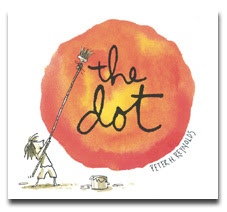
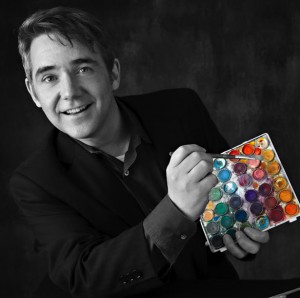 Peter Reynolds: I took the Long and Winding Road at the junction of Serendipity and Daydreaming. So many things “set the stage” for me being a writer for children (and grown up children), but I owe a lot to my daughter, Sarah Reynolds whose voracious appetite for stories demanded that I start coming up with stories to supplement what we could fit on her shelves or take from the library. Writing for her reset my creativity compass. You can get lost among the forests, swamps, and thickets of possible plots and characters, but she helped me focus on telling her a story- and instinctively I felt a need to give her something worthy of her intelligence and perhaps a scrap or two of wisdom I had clumsily gathered along the way.
Peter Reynolds: I took the Long and Winding Road at the junction of Serendipity and Daydreaming. So many things “set the stage” for me being a writer for children (and grown up children), but I owe a lot to my daughter, Sarah Reynolds whose voracious appetite for stories demanded that I start coming up with stories to supplement what we could fit on her shelves or take from the library. Writing for her reset my creativity compass. You can get lost among the forests, swamps, and thickets of possible plots and characters, but she helped me focus on telling her a story- and instinctively I felt a need to give her something worthy of her intelligence and perhaps a scrap or two of wisdom I had clumsily gathered along the way.
TBD: Teachers have played such a big part in your development as an artist (& a human it would seem), why do you think we undervalue teachers so radically & horribly in our society?
PR: How long do we have? Seriously, I could go on for days on this subject. I actually think most of us DO value the role of teachers, but we allow politicians and policy makers–who spend little to no time with children in learning environments–to strip away the resources and flexibility for great teachers to “do their thing.” If our government could control restaurants the way they do schools, you’d find Gordon Ramsey working as a fry cook at McDonalds. America takes pride in being independent and innovative. Our public education system-being a system–inherently strives to be efficient and in doing so, chops out all the “messy bits.” It’s this very “fringy” stuff that is required for innovation.
Book Doctors, you’ve inspired me to go out and hug the nearest teacher and cheer them on. Actually, the creative teachers DO know how to sneak in the good stuff. That, combined with the fact that technology is getting cheaper and into the hands of kids, is about to transform radically the world of schools as we know them.
TBD: How do you go about developing a picture book story? What’s your process, from idea through publication?
PR: We should have booked a week long Caribbean cruise. Here’s the nutshell version: My “story radar” goes off, I jot the idea down, and sometimes just one image or even a rough version of what the cover might look like. I roughly storyboard the images and add captions. I share with a few people. I read it out loud. Finesse and tweak. Then I share it with my agent, Holly McGhee at Pippin Properties who is a fabulous editor, thinker and guide. Then it’s on to find the right publisher. Once the book has a “home,” I work with the editor and art director to refine. The sales team gets into the mix when it comes time to confirm or change the title of the book and create the cover. When we’re all happy, it goes off to the printer and the long wait begins before getting that first preview copy. It may be a few months after that before the book shows up on bookshop shelves. That whole process can be squeezed into a year, but most often–from spark to finish–it can be about two years.
TBD: You seem to have many projects going on, how do you juggle all of them, running your business, and having a life?
PR: I do indeed, but I have great people around me to help get it all done. I have my wonderful team in Boston, FableVision, my bookshop staff at The Blue Bunny, my agents at Pippin Properties, among other great friends and colleagues. Balance though is key. I’ve worked hard in the past few years to get the formula right. Less is more. Less travel, more time with my 3 year old son. I have a new studio called The Sanctuary which, in theory, is my very own thinking and creativity temple, but I do occasionally find my son sprawled out painting mostly on sheets of paper, but also the floor. He actually reminds me of what freedom really looks like.
TBD: I’m so jealous that you have a twin. What’s that like?
PR: For me, it’s amazing. We both feel blessed. Not sure how you “singletons” do it. The journey is so much easier when you have a twin to share it with. While we are technically “identical” twins, Paul is not a “duplicate” of me. He is the being who is connected to me and able to extend my sensing of the universe (and vice verse.) It’s like two spaceships shooting in opposite directions to explore the universe, but in constant communication and transmitting to the one database back at ground control.
Our advice to everyone, if you don’t have a twin- go out there and find one!
TBD: So many picture book authors stress the lesson they’re trying to teach kids instead of character & story. Could you address this?
PR: I think that is a common trap. That “being on the nose” is a fear that kids won’t “get it.” Kids are mighty smart and they can smell “a lesson” a mile way. Hey, sometimes it’s a place to start, so whatever works for you, but then try to find a more creative way to get the audience to “connect the dots” after they’ve closed the book.
TBD: Why do you think there is a prejudice against rhyme in the picture book world?
PR: Well, on a practical note, rhyming books make it difficult to translate into the many other languages on the planet. It would be a real doozy to find equivalent words for “kale” and “pail” in Persian. Having said that, I think you can put that on ignore and just make a rhyming story that works. Rhyming books, done well, are a lot of fun to read aloud. My upcoming book collaboration, YOU & ME is a rhyming delight from Susan Verde. Do what makes you happy and the kids around you.
TBD: What are the greatest joys & frustrations about writing picture books?
PR: It is mostly JOY. I absolutely love sharing my stories with so many people around the world. Seeing the “ripples” that just one story can make is a “wow.” International Dot Day is a great example. Over a million teachers and students put down their regular work and tests on Sept 15th to celebrate creativity.
The frustration is having to schedule creativity. The publisher might have a deadline for a book due in September which means that I have to be ready to roll and really feel it in January. Trying to find that “surfer’s perfect wave” in the middle of a cold, winter’s day might not happen. Eventually, a wave appears and you ride it in to shore.
TBD: How did The Dot become such a great success?
PR: The Dot was my way to come to rescue of children (and adults) whose creativity and confidence had been steamrolled. As it turns out, there are plenty of folks facing this challenge. While it often gets labeled as an “art book,” the idea is really about bravery. Bravery is a universal concept. That helps a book find a big audience.
TBD: What advice do you have for beginning writers trying to break into the picture book racquet?
PR: Start with a real story. A startling memory of your own. A wee bit of advice your Dad shared. A wish you have for yourself – or for the world. Find the idea you know or believe in. One that you’d be very sorry if you lost along the way.
Find your network. Could just be your “twin,” or it could be a gaggle of Twitter friends, or the kids at the local library, or an organization like SCBWI .
Be brave. Make ONE book where you throw out all the rules, all the advice you have been given, all the notes in all the writing workshops, and create something just for YOU.
The most important advice I can give is this: KEEP GOING, NEVER STOP.
I’m planning on doing the same.
Peter H. Reynolds is the author and illustrator of the Creatrilogy series which includes The Dot, Ish, and Sky Color (Candlewick Press/Walker Books) Other books in his collection include I’m Here (Simon & Schuster), The North Star (Candlewick Press/Walker Books), as well as many collaborative works, which include The Judy Moody series (Candlewick Press/Walker Books) with Meghan McDonald. He is also co-founder of FableVision, a children’s media studio in Boston. His family runs The Blue Bunny Book & Toy Store in his hometown of Dedham, Massachusetts.
Arielle Eckstut and David Henry Sterry are co-founders of The Book Doctors, a company that has helped countless authors get their books published. They are also co-authors of The Essential Guide to Getting Your Book Published: How To Write It, Sell It, and Market It… Successfully (Workman, 2010).
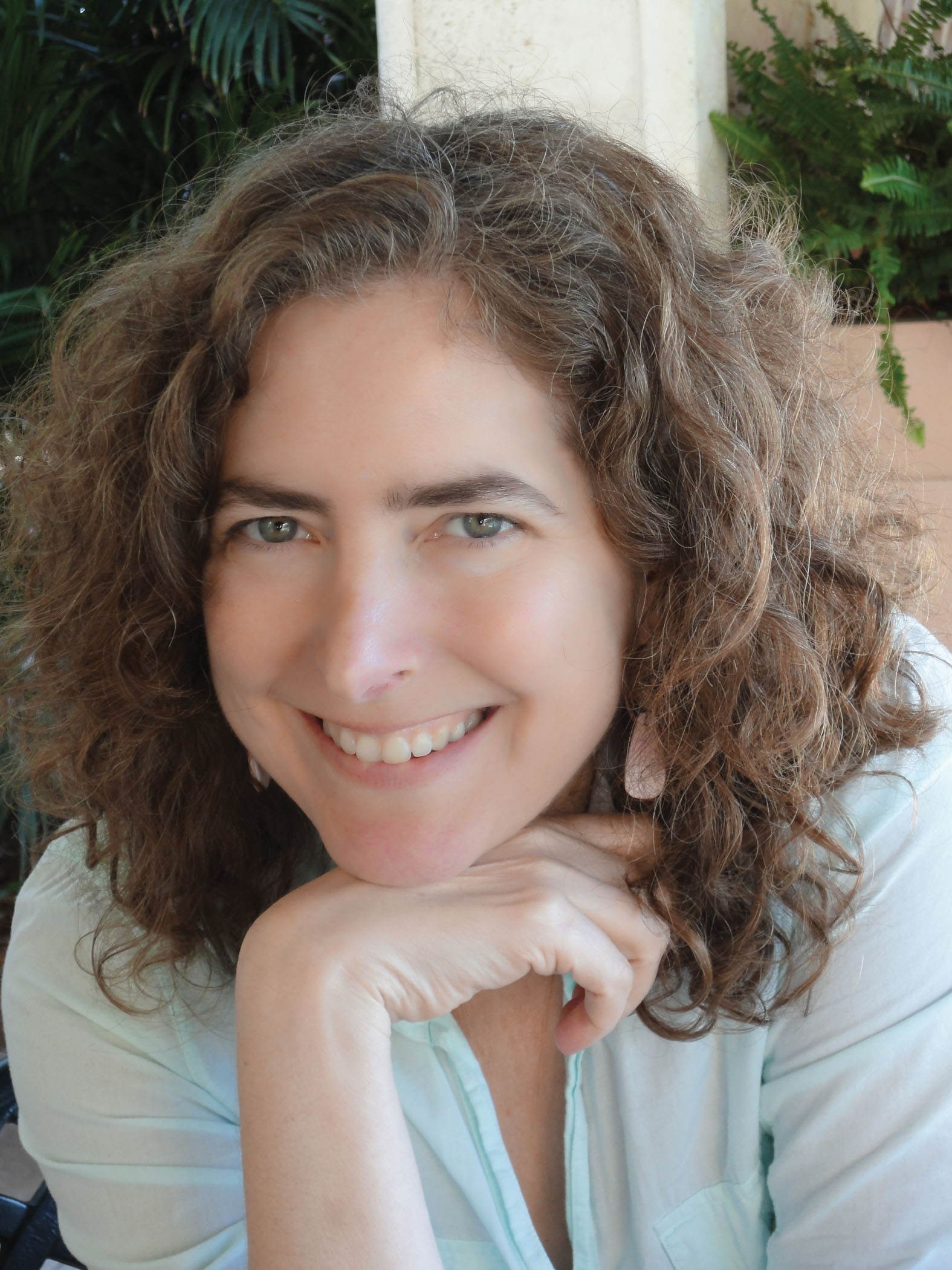
To read on Huffington post, click here..
After three different people recommend the book to me, I always try to read it. This is the case with Birds of Paradise by Diana Abu-Jaber. It was one of those rare books that I found literary yet page turning. A work of art but also a work of commerce. So I thought I’d reach out to her, to find out exactly how the heck she does it.
The Book Doctors: What is your writing process from coming up with the idea through writing the first draft and then revising and working with an editor?
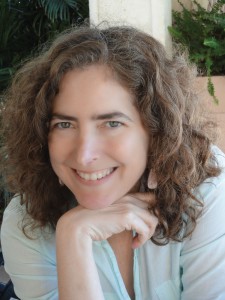
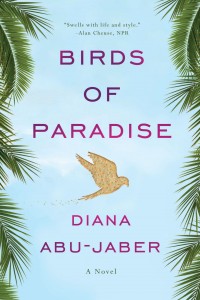 Diana Abu-Jaber: The Book Doctors: I write my novels long hand in the first draft. I used to transcribe them myself, which of course is wildly time consuming. These days I hire a typist and then revise on the computer. I try to get several eyes on a manuscript before it goes to my agent–I’m often in some sort of writing group and will inflict hundreds of pages on them, begging for feedback. My agent always has excellent editorial advice, and my editor is–I say this with a smile–extremely involved. She is brilliant and I’m lucky to have her guidance and support.
Diana Abu-Jaber: The Book Doctors: I write my novels long hand in the first draft. I used to transcribe them myself, which of course is wildly time consuming. These days I hire a typist and then revise on the computer. I try to get several eyes on a manuscript before it goes to my agent–I’m often in some sort of writing group and will inflict hundreds of pages on them, begging for feedback. My agent always has excellent editorial advice, and my editor is–I say this with a smile–extremely involved. She is brilliant and I’m lucky to have her guidance and support.
TBD: Having written memoir and fiction, how do you approach these two forms differently?
DAJ: Novels I understand better. They’re about trying to get the story down–which is never easy, but the process makes more sense to me. Memoirs are more elusive to me. I’m trying to write a new one now and first I wrote it as straight chronological narrative, then I had to go back over the whole thing, bust it into sensory fragments, then pull up the big themes, then try to weave it together again. There must be an easier way, but I haven’t found it yet.
TBD: What kind of training did you get in learning how to be a professional writer?
DAJ: My father was a story-teller and my mother was a reading teacher, they really gave me my foundation. I took a lot of writing classes and workshops in high school and college, but I think they were most valuable in giving me the justification for pursuing this madness and instilling the sense of an audience.
TBD: What’s the best advice anyone ever gave you about writing?
DAJ: Start with yourself, work out from there.
TBD: I love the way you use food in Birds of Paradise, how did you come up with & implement the idea of weaving food through the narrative?
DAJ: Thank you. I’ve been writing around and about food for a long time. I come from a line of serious cooks and it was something I thought I’d do professionally to support my writing. I used to keep little writing books in my pocket when I worked in kitchens and it naturally became one of the lens through which I saw the world.
TBD: It seems one of the themes in Birds of Paradise is how disconnected Americans are from each other. Family. City. Country. What made you want to write about that?
DAJ: That’s interesting– I hadn’t been conscious of that as I was writing! But it makes sense as it’s a bit of an obsession for me. I think it comes from a lifetime of listening to the Arab side of my family complain about the American side. It’s a real Old / New World divide, the tradition of gathering, talking, cooking, and eating together is still very strong in other countries and I see it getting winnowed away in this country– everything sacrificed to the great American time crunch. I think it’s one of our great and most catastrophic losses.
TBD: What is it like to judge writers for the National Endowment of the Arts?
DAJ: Enormous fun and crazily exhausting. The piles of manuscript boxes that come in before the judging kind of makes you want to weep. But then the actual week of judging is so intense and interesting– the other writers I worked with were so smart and talented, I’m grateful to have done it.
TBD: What advice do you have for writers?
DAJ: As much as you’re able, don’t worry about what others are doing– try to keep your head in the work. Read widely and continually and work on your writing on a daily basis. It’s a marathon not a sprint.
Diana Abu-Jaber’s newest novel, Birds Of Paradise, is the winner of the 2012 Arab-
American National Book Award. It was also an Indiepicks selection, named one of the
top books of the year by National Public Radio, the Washington Post, and the Oregonian,
and a finalist for both the Northwest Bookseller’s Award and the Chautauqua Prize.
Diana was born in Syracuse, New York to an American mother and a Jordanian father.
When she was seven, her family moved to Jordan for two years, and elements of both her
American and Jordanian experiences, as well as cross-cultural issues appear in her work.
Her novel, Origin was named one of the best books of the year by the LA Times, the
Chicago Tribune, and the Washington Post. Her second novel, Crescent, won the PEN
Center Award for Literary fiction and the American Book Award. Her first novel,
Arabian Jazz won the Oregon Book award for Literary Fiction and was a finalist for the
PEN Hemingway Award. The Language of Baklava, her cooking memoir, won the Northwest Booksellers’ Award, was a finalist for a James Beard Award, and has been published in many languages. Diana teaches at Portland State University and divides her time between Portland, Oregon and Miami, Florida. She can be found on Twitter at: @dabujaber and on her website www.dianaabujaber.com
Arielle Eckstut and David Henry Sterry are co-founders of <a href=”http://www.thebookdoctors.com/” target=”_hplink”>The Book Doctors</a>, a company that has helped countless authors get their books published. They are also co-authors of The Essential Guide to Getting Your Book Published: How To Write It, Sell It, and Market It… Successfully (Workman, 2010). Arielle Eckstut has been a literary agent for 20 years at The Levine Greenberg Literary Agency. She is also the author of eight books and co-founder of the iconic brand, LittleMissMatched. David Henry Sterry is the best-selling author of 16 books, on a wide variety of subject including memoir, sports, YA fiction and reference. His books been translated into 10 languages, and he’s been featured on the front cover of the Sunday New York Times Book Review. They have taught their workshop on how to get published everywhere from Stanford University to Smith College. They have appeared everywhere from The New York Times to NPR’s Morning Edition to USA Today. Twitter: @thebookdoctors
</a>
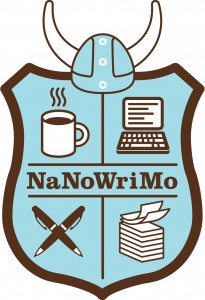
Making Editing Fun: How to Enjoy Revising Your Novel Successfully $60
The first 200 writers who sign up by January 28 will receive invitations via email to participate in this webinar, which will take place on Wednesday, Jan. 29, from 5:00 PM – 6:30 PM Pacific. If you can’t join the webinar live, we’ll happily send you a link to the recording afterward.
About the Webinar
One of the hardest thing for Nano writers is to take their beautiful but unshaped pieces of clay and turn them into glorious works of art that agents, publishers and readers will fall in love with. But what may seem a confusing and slightly terrifying task
can actually be a systematic and easily understood process. And yes, it can even be fun!
Join the Book Doctors, Arielle Eckstut and David Henry Sterry, who have helped talented amateurs become professionally published authors. Between them, they have over 30 years of experience in the publishing business, and have authored, agented and/or midwived hundreds of books, including The Essential Guide to Getting Your Book Published: How to Write It, Sell It, and Market It . . . Successfully.
The Book Doctors will show you how to:
• Start off with a bang
• Check character arcs
• Pace properly
• Build suspense
• Open and close chapters
• Avoid repetition avoid repetition avoid repetition
• Trim fat
• Make the most of your title
• Know when to show and when to tell
• Avoiding clichés
• Keep dialogue real
• Check for words you use over and over and over again
• Read aloud
• Kill your babies
• Find beta readers
• Get objectivity
• Use your pitch to perfect your plot
The Book Doctors will also randomly select a number of first paragraphs from attendees’ manuscripts during the webinar to demonstrate what a professional edit look likes. Send your first paragraph in the body of the email to [email protected] when you sign up.

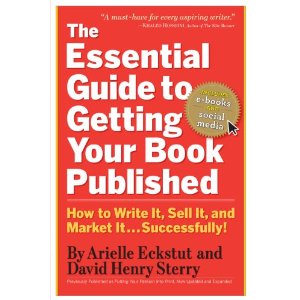 Your pitch is one of the most powerful and underrated arrows in your quiver as you attempt to scale the walls of Publishing Castle. Here are just a few helpful tips.
Your pitch is one of the most powerful and underrated arrows in your quiver as you attempt to scale the walls of Publishing Castle. Here are just a few helpful tips.
1. A great pitch is like a poem. Every word counts.
2. Make us fall in love with your hero. Whether you’re writing a novel or memoir, you have to make us root for your flawed but lovable hero.
3. Make us hate your villain. Show us someone unique and dastardly whom we can’t wait to hiss at.
4. Just because your kids love to hear your story at bedtime doesn’t mean you’re automatically qualified to get a publishing deal. So make sure not to include this information in your pitch.
5. If you have any particular expertise that relates to your novel, tell us. Establishing your credentials will help us trust you.
6. Your pitch is your audition to show us what a brilliant writer you are, it has to be the very best of your writing.
7.Don’t make your pitch a book report. Make it sing and soar and amaze.
8. A pitch is like a movie trailer. You start with an incredibly exciting/funny/sexy/romantic/etc. close-up with intense specificity, then you pull back to show the big picture and tell us the themes and broad strokes that build to a climax.
9. Leave us with a cliffhanger. The ideal reaction to a pitch is, “Oh my God, what happens next?”
10. Show us what’s unique, exciting, valuable, awesome, unexpected, about your project, and why it’s comfortable, familiar and proven.
Here’s a link to interview I did about pitching for NPR.
We’re offering free 20-minute consultations (worth $100) to anyone who buys a NEW copy of The Essential Guide To Getting Your Book Published. Just email [email protected] and we’ll set up your consultation.

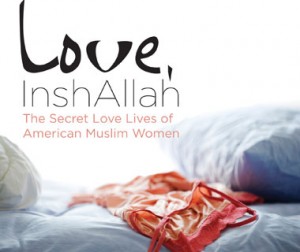 We first met Nura Maznavi and Ayesha Mutta at our Pitchapalooza during San Francisco’s legendary LitQuake. Lots of great writers pitched lots of great books that night. But when Nura pitched her anthology revolving around the love lives of Muslim-American women, we were blown away. She took charge of the room like a seasoned professional, she was funny, charming, articulate, and she had that indefinable It that makes people go: Wow! Plus, the book was so timely, so valuable, so necessary when the world is trying desperately to move from combative intolerance to respectful inclusion. From war and terrorism to peace and understanding. We helped them develop their proposal, hone their pitch, and when the time was right, we introduced them to a fantastic publisher who does exactly the kind of book they wanted to write. This is a mistake so many writers make. They don’t get their book into the hands of the person who is most likely to love, represent and/or publish it. In this case, that publisher was Laura Mazer at Soft Skull. As we suspected, she fell in love with the proposal, and offered them a contract. Right place, right time, right stuff. Nura and Ayesha gathered 25 Muslim-American women writers, and lo and behold, their pitch is now a book. Love InshAllah: The Secret Love Lives of American Muslim Women came out last week, and already they’ve had a feature in the New York Times written about them, and the demand has been so large, they sold out of the first printing practically before the book was even out.
We first met Nura Maznavi and Ayesha Mutta at our Pitchapalooza during San Francisco’s legendary LitQuake. Lots of great writers pitched lots of great books that night. But when Nura pitched her anthology revolving around the love lives of Muslim-American women, we were blown away. She took charge of the room like a seasoned professional, she was funny, charming, articulate, and she had that indefinable It that makes people go: Wow! Plus, the book was so timely, so valuable, so necessary when the world is trying desperately to move from combative intolerance to respectful inclusion. From war and terrorism to peace and understanding. We helped them develop their proposal, hone their pitch, and when the time was right, we introduced them to a fantastic publisher who does exactly the kind of book they wanted to write. This is a mistake so many writers make. They don’t get their book into the hands of the person who is most likely to love, represent and/or publish it. In this case, that publisher was Laura Mazer at Soft Skull. As we suspected, she fell in love with the proposal, and offered them a contract. Right place, right time, right stuff. Nura and Ayesha gathered 25 Muslim-American women writers, and lo and behold, their pitch is now a book. Love InshAllah: The Secret Love Lives of American Muslim Women came out last week, and already they’ve had a feature in the New York Times written about them, and the demand has been so large, they sold out of the first printing practically before the book was even out.
THE BOOK DOCTORS: So, this must be a very exciting time, congratulations, we’re so excited for you.
NURA & AYESHA: Thanks, it is. We worked so long and so hard on this book, and there were so many times when we were sure it would never happen, so to have all this great response been fantastic
TBD: So many writers don’t consider who their audience will be, or in fact if there is even an audience, before they write their book. Why did you write your book, and why did you think there would be an audience for it is?
N&A: People are fascinated by Muslim women, but we didn’t see ourselves or our opinionated, independent and intelligent friends reflected in media stories, TV plotlines or movies. We decided this was the perfect opportunity to raise our voices and begin telling our own stories. And what better stories to tell than love stories? As Muslim women, our roadmap to love may be unique, but the destination is universal.
TBD: Most writers don’t understand how important a pitch is. It’s what a writer uses to get an agent and/or a publisher, it’s what the publisher’s marketing team (if they have one) will send out to the media, what the sales team will use to get bookstores to carry your book, what will entice readers on your author page, and on the back of your book, it’s what booksellers will tell customers when they’re looking for a book like yours.
N&A: Exactly! That’s why we spent so much time writing the pitch and practicing it aloud, to make sure it flowed well, that it really displayed what was unique and valuable about our project.
TBD: We always tell people to pitch their book as often as possible. To friends and family of course, but to your mailman, your waitress, your priest, total strangers, whomever. Every time you pitch your book, it’s an opportunity to test market your product. To figure out what works and what doesn’t, and how to make it better. And we meet a shocking number of writers who are afraid to talk about their book because they’re scared someone will steal it. Or hate it. But if you don’t tell anybody about your book, there’s a good chance it will and up just being a file buried in your computer. And you never know who’s going to be friends with somebody in publishing. That’s how David got published. He told an old friend about his book. Unbeknownst to him, her goddaughter was a literary agent. She took him on as a client. Then she married him.
N&A: That’s so romantic!
TBD: In a very book-nerdy way.
N&A: Exactly.
TBD: Since you won Pitchapalooza with your kick-ass pitch, go ahead, lay it on us, what’s your book about?
N& A: Love InshAllah: The Secret Love Lives of American Muslim Women is a groundbreaking collection of 25 writers speaking openly about love, relationships, sexuality, gender, identity and racism for the first time. Everyone seems to have an opinion about Muslim women, even (especially!) those who have never met one. We thought it was about time you heard directly from Muslim women themselves. You’ll be captivated by these provocative, funny, moving and surprising stories — each as individual as the writers themselves.
TBD: What made you decide to pitch the idea at our Pitchapalooza?
N&A: Our book proposal was dead in the water, publishers were unwilling to take a chance on this book. When we heard about LitQuake Pitchapalooza in September 2010, we thought it might be an opportunity for us to go public with our hunch that our book’s simple but intriguing concept — American Muslim women’s lives and loves, told for the first time by the women themselves — would have a broad appeal. Pitchapalooza helped us refine our message and hook. The judges’ feedback was invaluable in developing our book proposal. And the audience was so excited about the premise that we knew we’d been right about its appeal!
TBD: What are some of the biggest misconceptions about American Muslim women, dating, and sexuality?
N&A: Muslim women’s lives and sexuality have been politicized by both non-Muslims and Muslims for centuries. On the one hand, we’re seen as oppressed, submissive, and voiceless, and on the other we’re asked to live within a limited definition of the “good Muslim girl”. Neither of these paradigms allows us to celebrate our personal lives, which are full of joy, creativity, beauty, challenges, doubts and mistakes. Both extremes seek to box us into a narrow “real Muslim woman” frame, but by telling our own stories, we are revealing a reality that is far more complex and compelling.
TBD: What were some of the challenges in putting together an anthology with all these women?
N&A: Editing was the most challenging and most rewarding experience of all. We spent a lot of time supporting our writers in taking their stories to the place of honesty and vulnerability that resonates with readers. And, through the process of editing, we developed wonderful relationships with each writer. We deeply love and respect them all!
TBD: Are you afraid that some fundamentalist Muslims will take offense at your book?
N&A: Fundamentalists certainly aren’t limited to Muslims, as we saw with the recent controversy generated by a fringe group in Florida over the TLC show All-American Muslim! There are some people on both sides who want to keep Muslim women tightly inside a box. That said, a filmmaker friend of ours visited over 200 US cities recently and brought back this message: People are tired of the politics of fear and are hungry to connect with each other in more meaningful and compassionate ways. We believe her, and we believe that the overwhelming majority of Americans are going to welcome and be excited by this book for that very reason. Any book is going to have its critics, but we’re confident that most people are going to celebrate these unique, thought-provoking and beautiful voices.
TBD: What’ve been some of the difficulties in dealing with the publishing world?
N&A: A Pitchapalooza judge said that large publishers are leery of taking risks on unknown writers or an untested market.
TBD: That’s why I thought Soft Skull would be perfect for you.
N&A: Absolutely. They’re a independent, cutting-edge publisher, and they respected our context and viewpoints on everything from the stories to the cover of the book, which can be a contentious and difficult issue for writers of color. In fact, the cover is a wonderful example of our partnership: The conventional image on most books about Muslim women is of a veil or veiled woman, even when it has nothing to do with the story or writer. After we explained why that was inappropriate, we found a gorgeous, novel and provocative image to use instead: lingerie! The lingerie strewn across the bed is a metaphor for the book: Muslim women revealing their most intimate thoughts and experiences to you.
TBD: What do you hope your book will communicate to the world?
N&A: We are proud to offer this book as our contribution to contemporary, multicultural American literature. We believe these stories will start conversations in families and between communities about the similarities that bind us together, and the differences that enrich us. We hope that this book inspires dialogues in the American Muslim community, particularly among women, who have been waiting a long time to have these discussions. We’re so ready to engage with each other! Regardless of our differences, we can choose to interact with each other in a compassionate and respectful way. By reading these provocative, funny and moving stories, you’ll discover that what we all have in common is the desire to love and be loved for who we are.
Ayesha Mattu & Nura Maznavi are the co-editors of the anthology, Love, InshAllah: The Secret Love Lives of American Muslim Women” (Soft Skull Press, 1/24/12). Facebook. Twitter. Amazon.
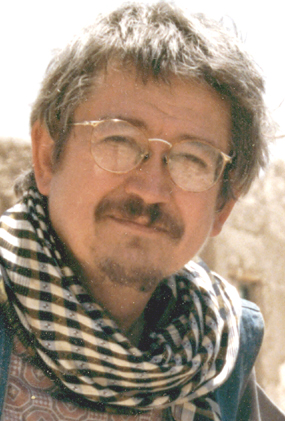

Tamim Ansary is the wisest man I know. Don’t get me wrong, in many ways he’s as big an idiot as you or I. For example, he’s not nearly as smart as his smartphone. But I know lots of clever geniuses who can make their smartphone dance the chachacha while reciting the Gettysburg Address, but none of them are very wise. Tamim says things that make you kick yourself and go, “Why didn’t I think of that?” And because he spent his Wonder Years in Afghanistan, and has a large web of family (many of whom, apparently, he has no idea he’s related to) in Afghanistan, he knows things that hardly any of us know. About how they think, how they live, who they are, what they want, these people with whom we are so intimately involved yet understand so little. Since he spent the last year or so writing a book about the history of Afghanistan called, Games Without Rules: The Often Interrupted History of Afghanistan, I thought I’d pick his big brain about a subject I want to understand, one which will, I hope, make me seem smarter at parties.
DAVID HENRY STERRY: Reading your book, it becomes more and more clear that Afghanistan has a long history of being invaded. Is there something particular about the people, the culture, the country that screams: Invade me?
TAMIM ANSARY: Afghanistan is the land in between. It’s the place where the age-old “great powers” to the north, west, south and east overlap. It’s the real estate that empire-builders have had to march through over the centuries to get to other, more desirable places. In the 19th century, Russia had to take this land to get to the Arabian Sea, which they coveted because it would at long last give them a year-round port and access to the oceans. Britain was determined not to let the Russians sink roots here because time and again over the centuries, empire-builders have swept down from this platform to conquer India — which was now Britain’s prize possession. In all the tussles of the twentieth century, the powers trying to invade didn’t care about Afghanistan per se. They invaded it so that their rivals would take it. In the mid-twentieth century came the Cold War. Now, Afghanistan was the nut between the pincers of the Soviet Union to the north and the U.S. and its allies to the south. Pakistan and Iran were firmly under U.S. control but Afghanistan was in play — non-aligned. If the U.S. could get it they really have a fence around Soviet power; if the Soviets could get it, they’d poke a hole through that “containment” fence. Once again, Afghanistan mattered for strategic reasons and no one (except Afghans) cared about who or what was actually in this territory. And strategically, Afghanistan still matters today. Oceans aren’t so important anymore, but Afghanistan makes a perfectly situated air-base. Planes taking off from here can reach Iran, China, India, all the Central Asian former-Soviet-republics, and even Russia.
DHS: In America we seem to have turned the Taliban into the bogeyman, like if we could just get this one group of evil villains under our thumb and into Guantánamo, the problem would go away. Reading your book, I now suspect that this is wrong. Who are the Taliban exactly? Who are they not?
TA: When they first emerged, the Taliban were a single, specific, cohesive group. They had a leader, they had top officials, they had cadre, they had an ideology. They were organized by elements in the Pakistan military, were bound together by a radical Islamist ideology, and served as a tool for Pakistani domination of Afghanistan. Their period of rule was, to some extent, just another foreign invasion of Afghanistan, just like those the British undertook. But then in 2001-02, the United States toppled and scattered that Taliban and they fragmented. Today’s insurgents, so frequently and so casually labeled “the Taliban,” are a motley hodge-podge of anti-government rural folks, remnants of guerrilla armies that roamed the land for two decades, drug traffickers, tribal lords whose power is threatened by the reemergence of a central government, newly emerging criminal networks, fragments of the original Taliban that have re-congealed as rural gangs, and so on. A few al-Qaeda-type Jihadists from the Arab world are sprinkled into the mix, and saboteurs from Pakistan are said to be active in Afghanistan as well; but then, “Talibanist” saboteurs from Afghanistan now roam into Pakistan as well, to make trouble. Basically, the area once divided by a distinct border between two countries (Afghanistan and Pakistan) has dissolved into a belt of unruly, anti-government (any government) militants whose power derives from local sources and amorphous demographic is who we are calling “the Taliban.”
DHS: When you hear about Afghanistan in American media you get the impression there is the Taliban and those against the Taliban. Is Afghanistan really divided like this?
TA: Afghan society features a continuum of values, attitudes, beliefs and affiliations. At one extreme are radical reactionary fundamentalist Islamists, and outward-looking, secular-tending, modernist urban folks friendly to Western values and ideas at the other extreme. But these are merely the extremes, Between the two you’ll find every shade of grey. So it’s not a case of the Afghans being one group and the Taliban another group, with the one attacking the other. It’s more a case of a culture torn by its own contentions and contradictions, a contest that goes a long way back into Afghan history.
DHS: What is my moral obligation as an American, when it comes to Afghanistan?
TA: When the U.S. went into Afghanistan they established a plan that would transform Afghanistan into a secular, Western-style parliamentary democracy and a society in which women participated in public on a par with men and enjoyed equal rights and opportunities. Many Afghan men and women staked their lives on this American project succeeding. They bought into it. They went into businesses that depended on the country moving in the direction the West had laid out. Women dared to emerge as activists, they ran for and won parliamentary seats, they challenged laws, they led demonstrations, they became public figures. If Afghanistan crumbles back into the sort of chaos that wracked it in the 1990s after the Cold War ended and all the foreign powers completely withdrew not just military but civilian and economic involvement in Afghanistan, the people who bought into the project are probably going to be in trouble. Many of them may perish. The U.S. has no choice but to move forward with a withdrawal of at least most of its forces, but this withdrawal has to be conducted in a responsible manner, with some guarantee that America’s partners in Afghan society won’t simply be overwhelmed.
DHS: How much of the U.S. involvement in Afghanistan is self-serving? And how?
TA: The U.S. has strategic interests in Afghanistan. For one thing, this will be the corridor through which oil and gas from the Caspian Basin will have to pass, in order to reach the West once that oil comes into play; so it’s important that Afghanistan be safe, stable and peaceful in that near future. Also, this land holds the key to the stability of the region as a whole. Chaos in Afghanistan would almost surely trigger chaos in Pakistan, would invite Iran to rush in, would bring China into the picture, which would trigger a reaction from India… Pakistan has nuclear bombs. Even as it stands, Pakistan is unnervingly reckless; if even this simulacrum of a state dissolves, there is no telling who of the many potential successor groups in the country will end up with those bombs. Powerful elements in Pakistan nurse an almost crazed paranoia about India, a hostility that has brought these countries to the edge of war within this decade — if an irrational group fueled by paranoia and hatred gets possession of Pakistan’s bombs, it might decide to settle matters once and for all with India — which also has nuclear weapons. (And now Iran could get such weapon-capability.) What America doesn’t seem to have, particularly, is a self-interested motive related to Afghanistan’s vaunted mineral wealth — the trillion-plus dollars worth of copper, iron, rare-earth minerals and such. The United States has made no move on those minerals, at a time when others, such as China, have worked vigorously to acquire the rights to them.
DHS: What do people think of Americans at this point in Afghanistan?
TA: Over these last few years, a number of events have eroded goodwill toward America among Afghans. Of course sporadic mistaken bombings of wedding parties, of rural children grazing herds, and of other civilians have contributed to this erosion. Of course, Sgt. Bales’ massacre of 16 civilians didn’t help. The NATO policy of conducting “night raids” to arrest suspected terrorists has been a public relations disaster. But to my mind, the single most consequential error was the incineration of Korans in a trash fire by soldiers at Bagram Air Base, especially because Western observers never really understood the gravity of this act in the eyes of Afghans. And yet… and yet… even though many people I spoke to there wanted NATO to leave, some of those very same people expressed the hope that they wouldn’t. All this, however, is in the cities. In the countryside, especially in the south and southeast, I imagine people are more uniformly hostile to the American presence.
DHS: What will it take to have peace in Afghanistan?
TA: There is no certain path to peace. Every road passes through difficult terrain. In the long run, the foreign powers have to find a way to declare Afghanistan a non-aligned zone whose neutrality all outside parties pledge to observe and respect. At the same time, an international consortium needs to oversee continued aid to Afghanistan, ideally to help the country take control of its own vast, rich mineral resources and to develop that wealth. Once outside interference in Afghanistan is curtailed, Afghans will begin to settle scores among themselves. This might be very painful for outside observers to watch, and it might be very tempting for one party or another to intervene in order to make sure the struggle comes out “the right way.” But the outcome in Afghanistan will be meaningful only if Afghans attain it on their own.
DHS: What should America do about Afghanistan?
TA: Build connections, contacts and relationships with all the various factions and forces in the country, leaving a door open to have a diplomatic relationship with whoever emerged as the ruling group, do the hard work of global negotiating needed to ensure Afghan neutrality in the global contests of today, and play a peacemaking role as best it can while gradually easing out of the scene. But that’s easy for me to say. The devil is in the details.
Tamim Ansary can be found at his website. His new book is available online or at a bookstore near you.

